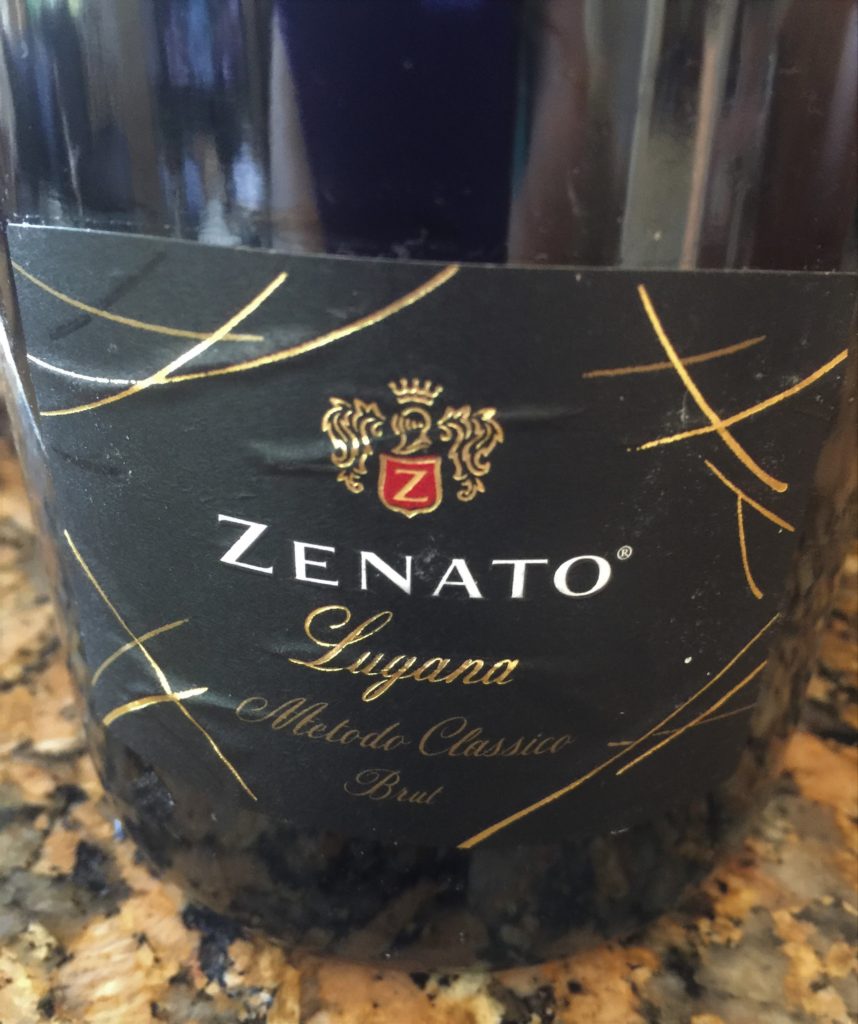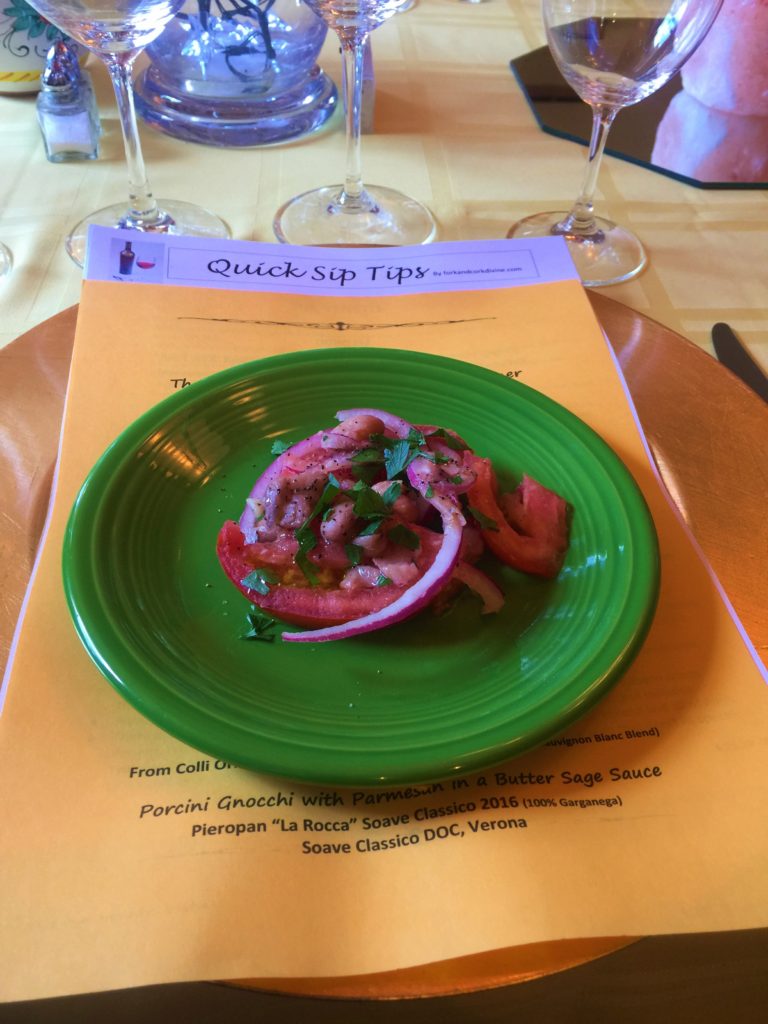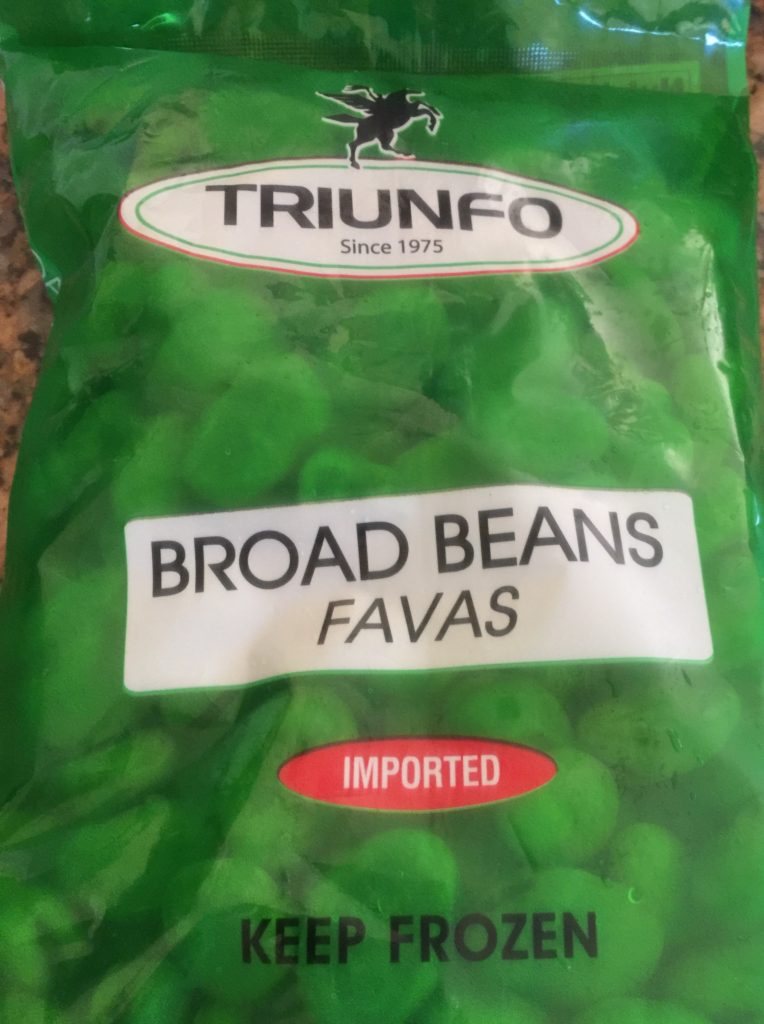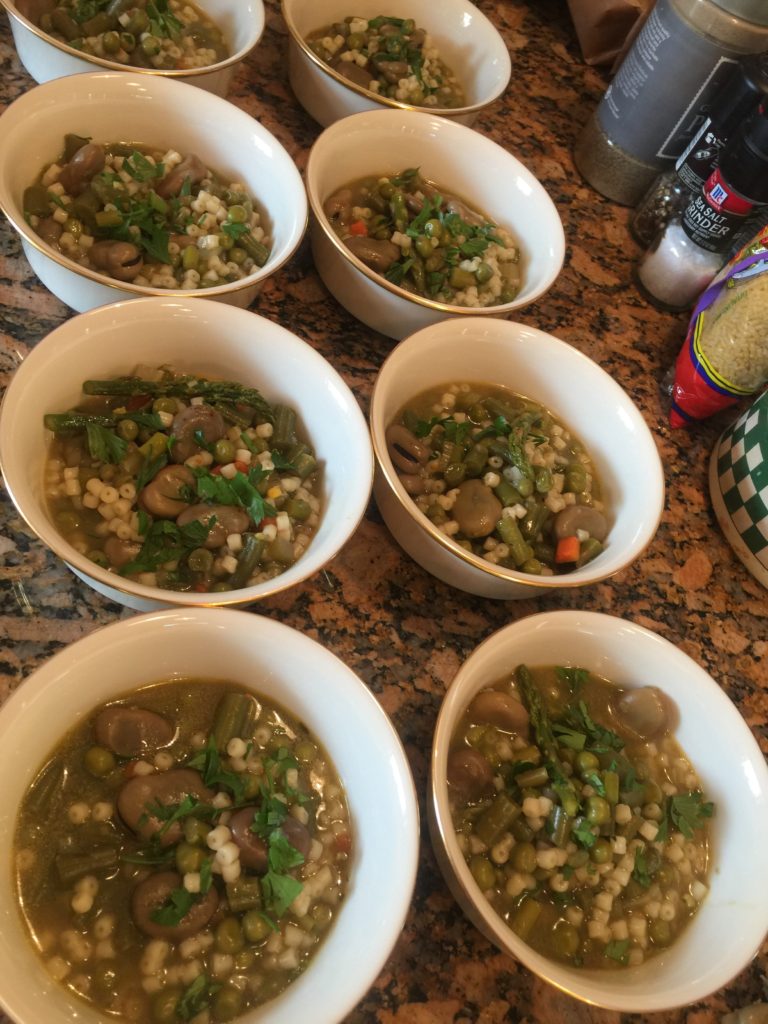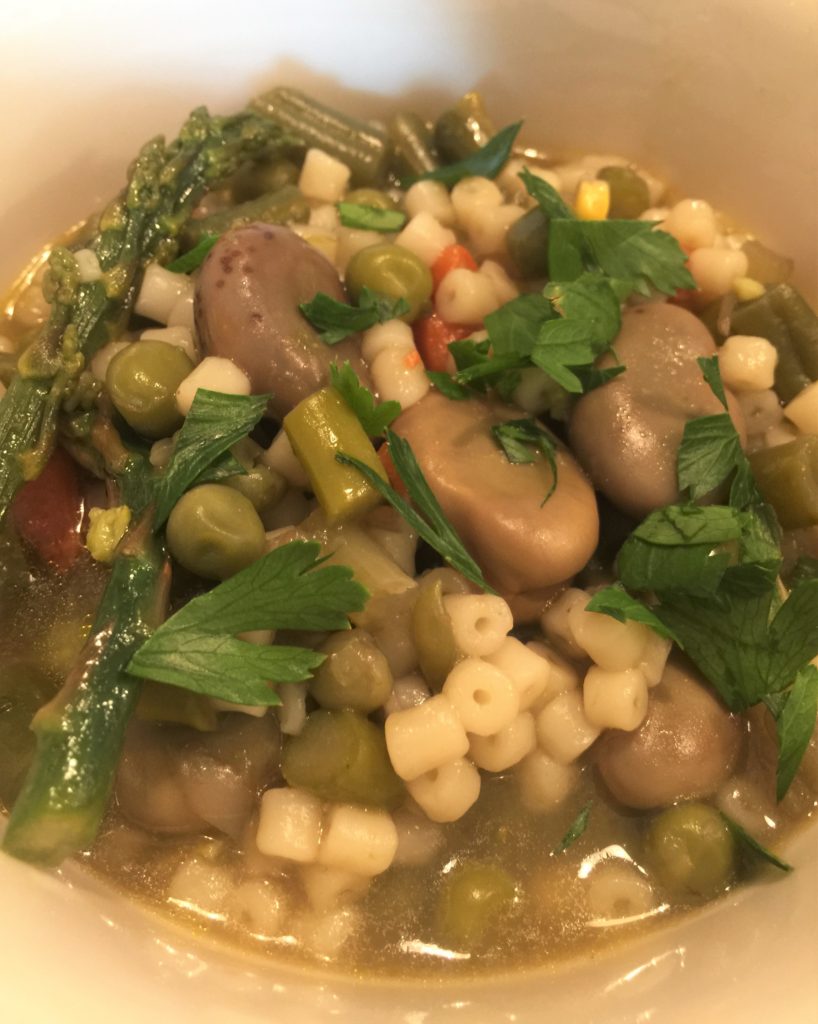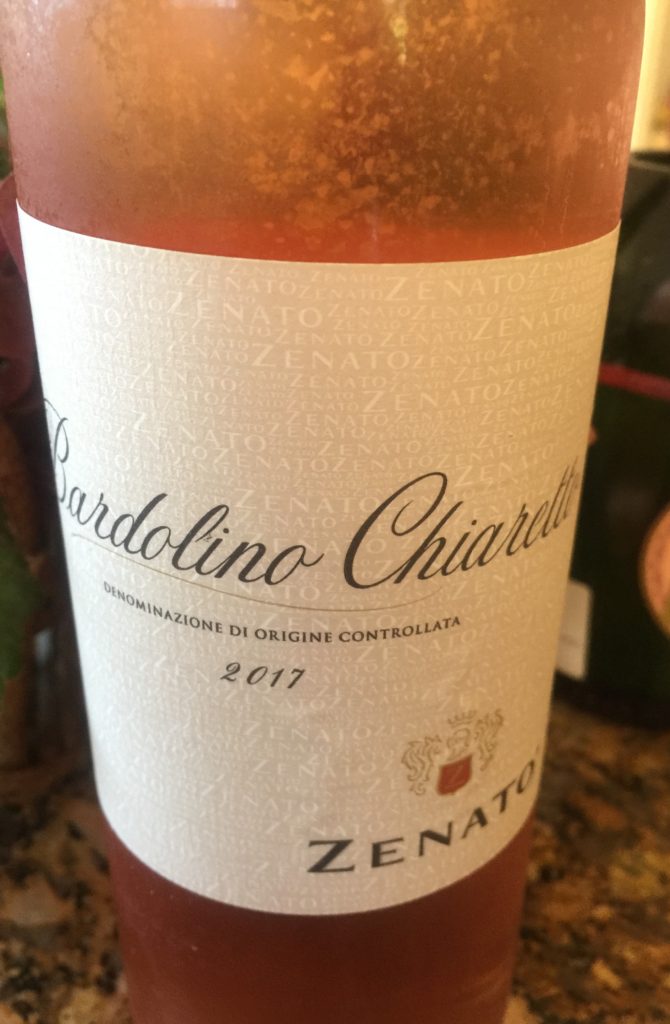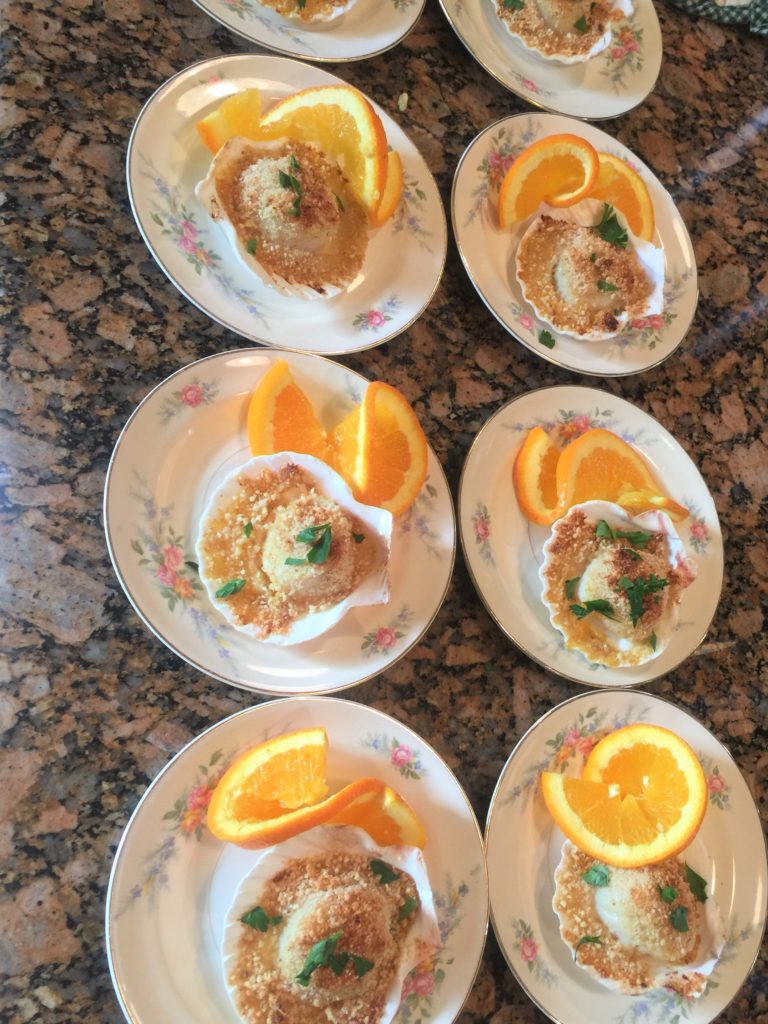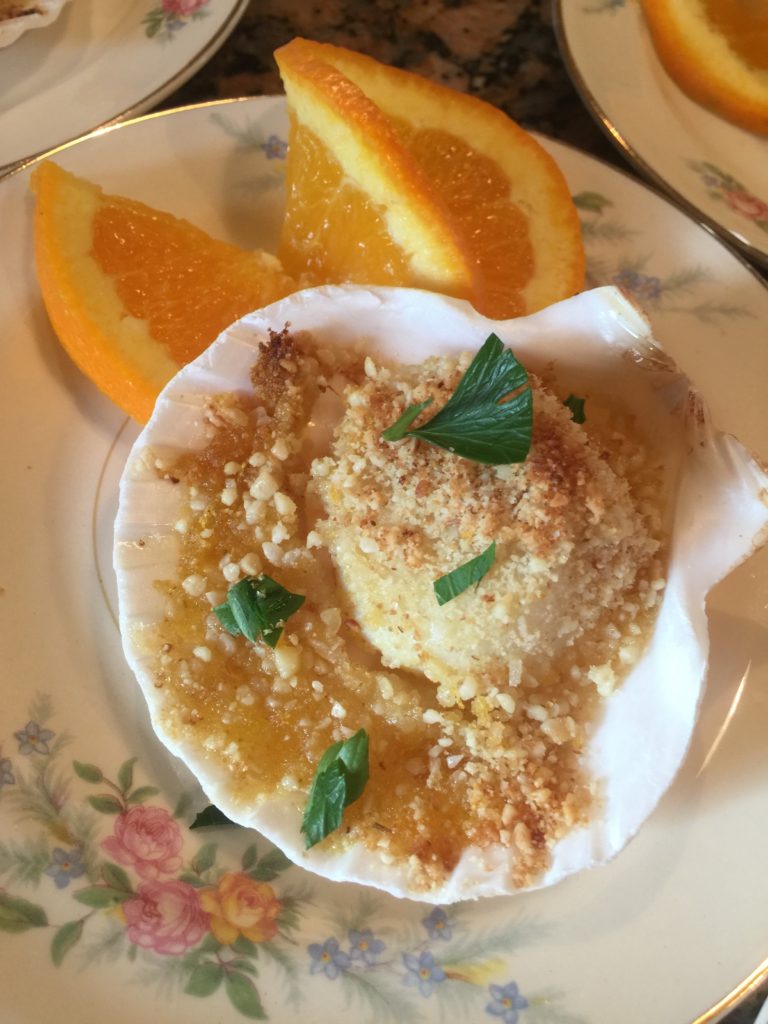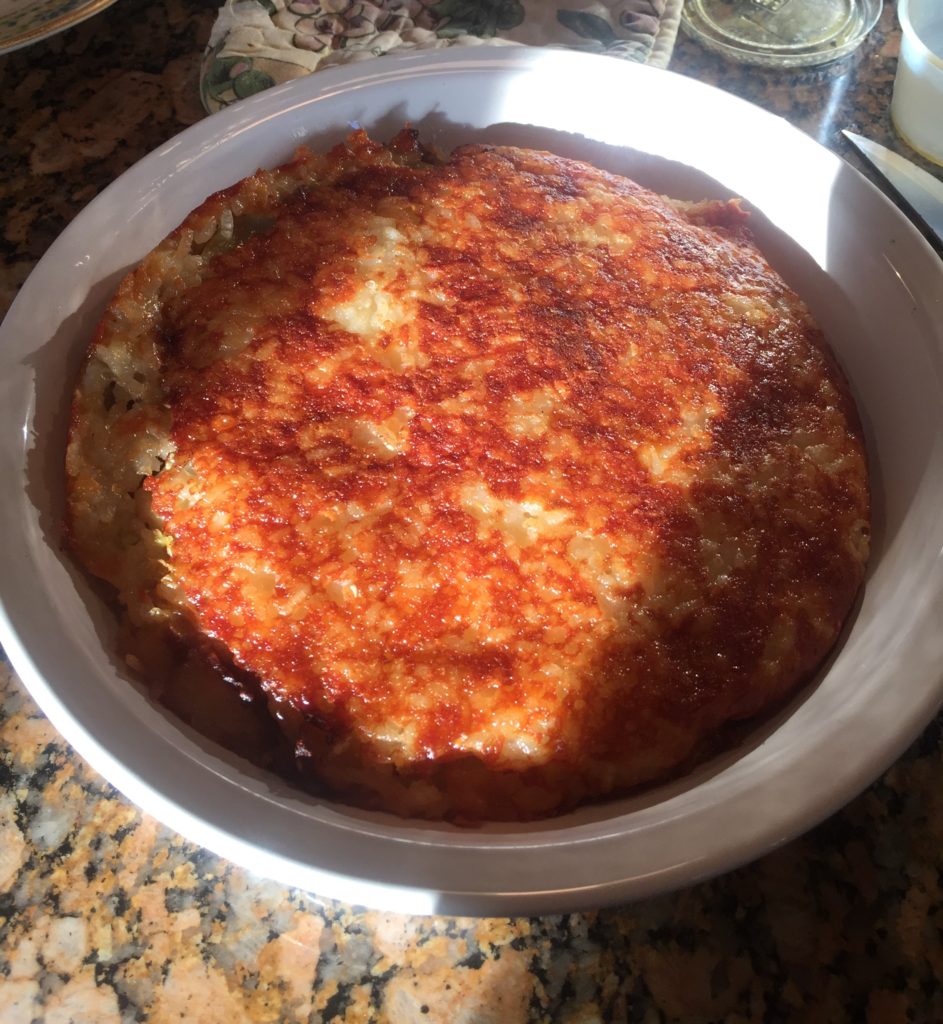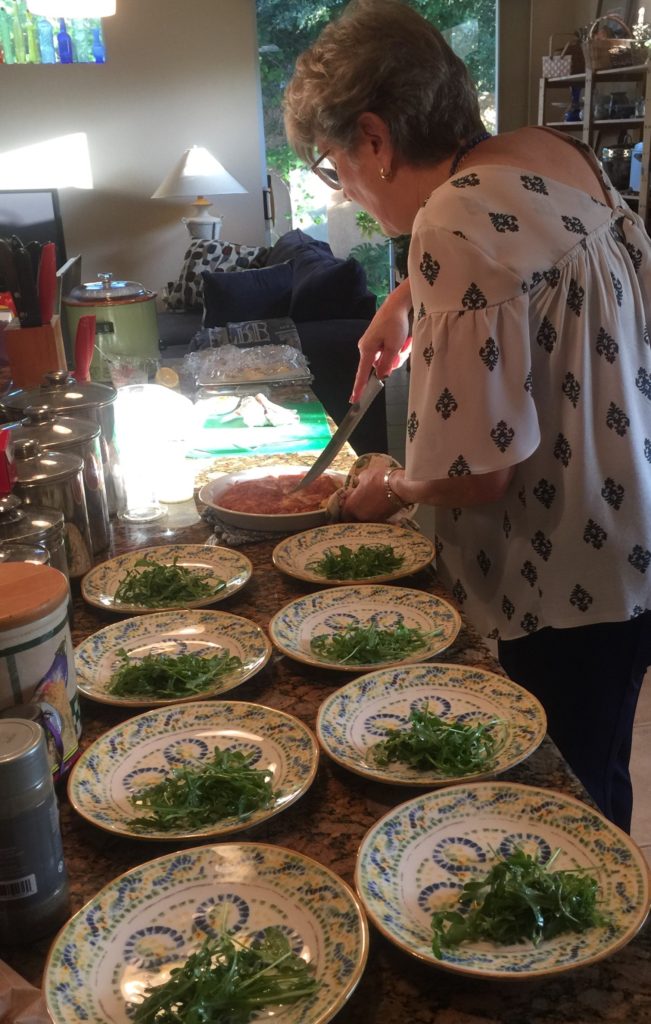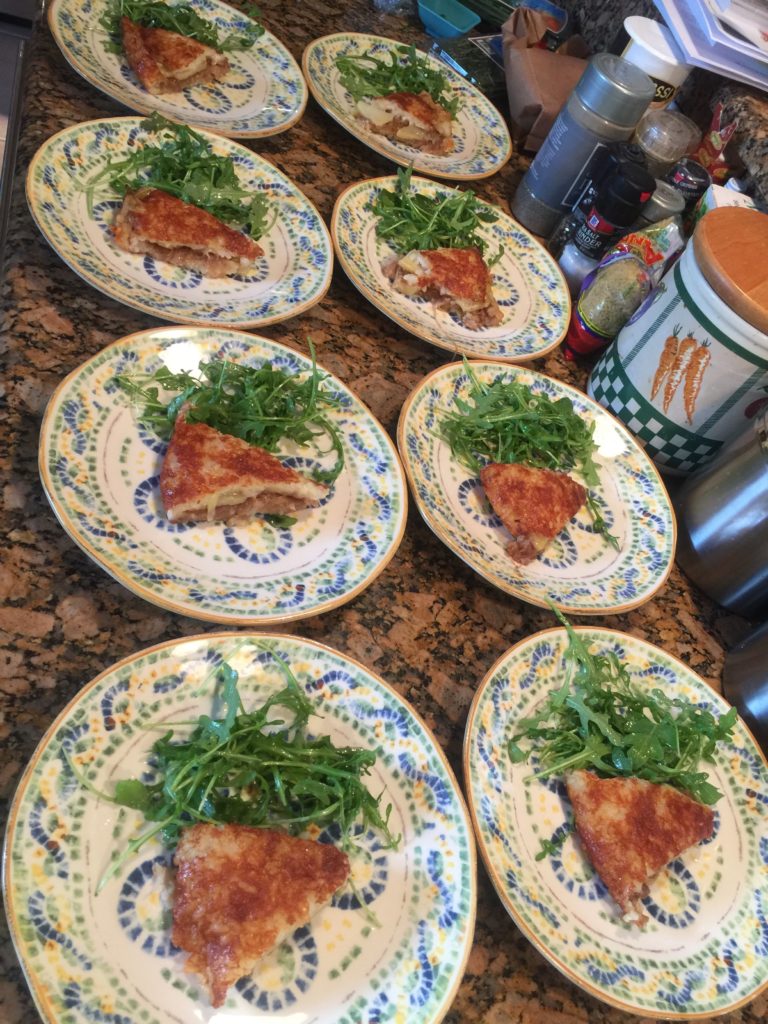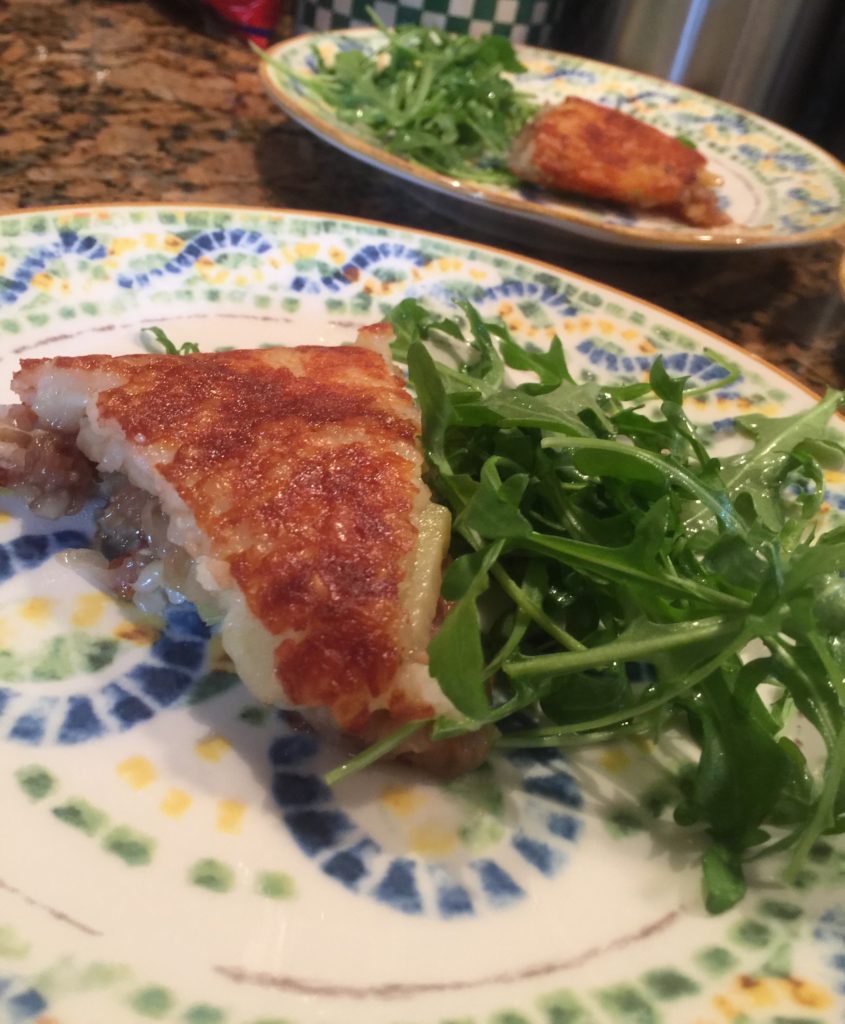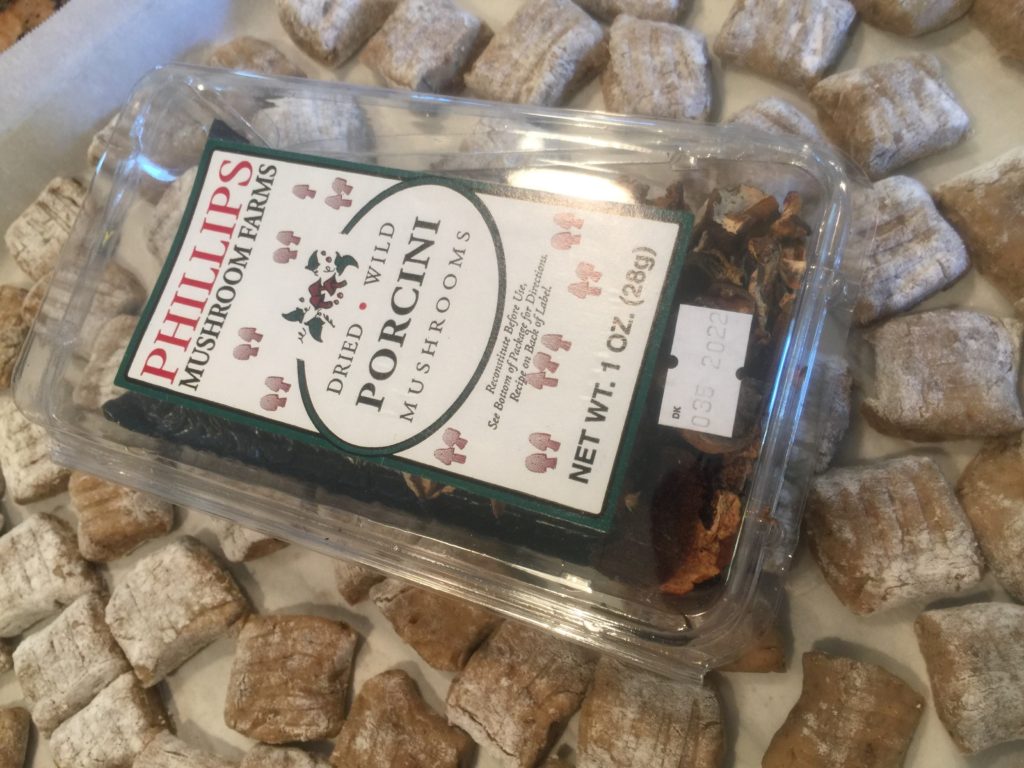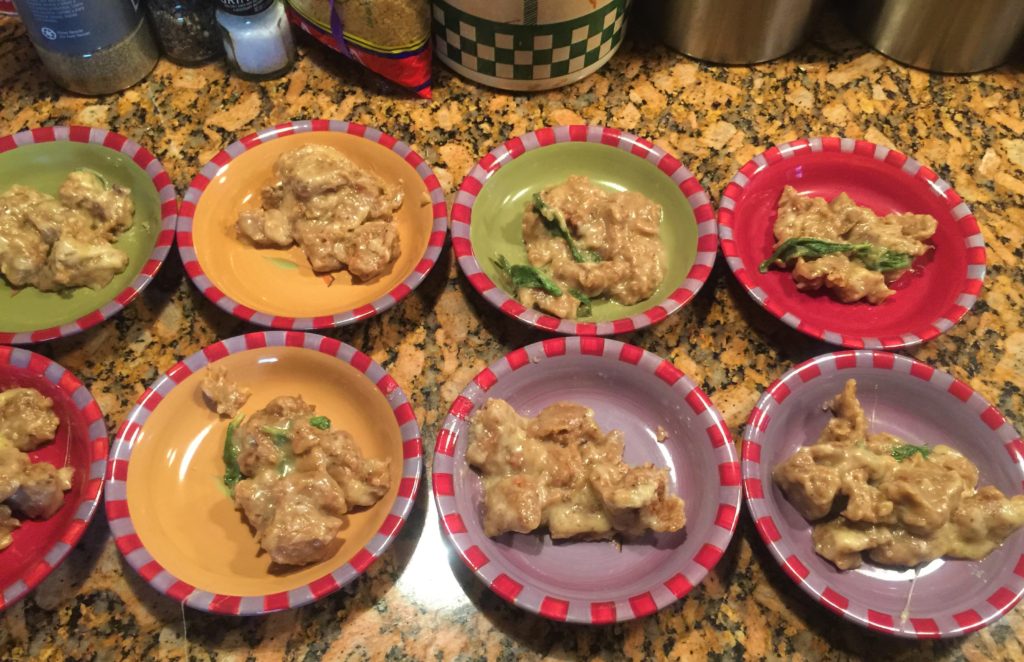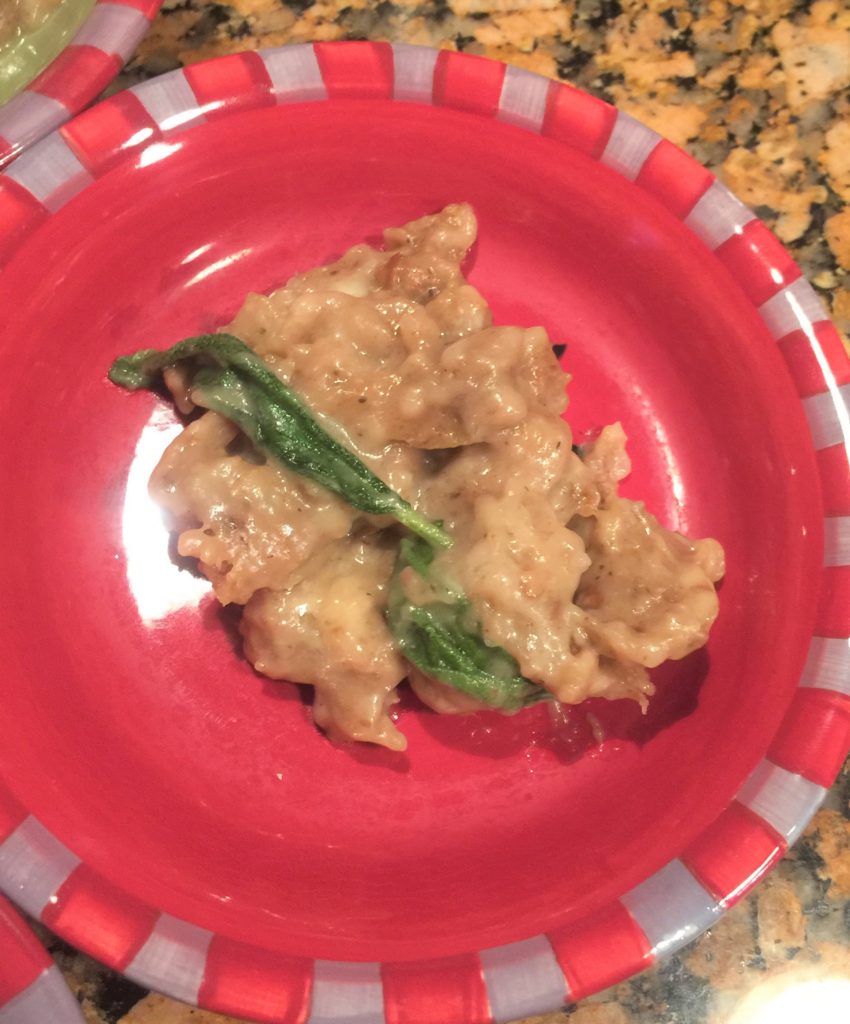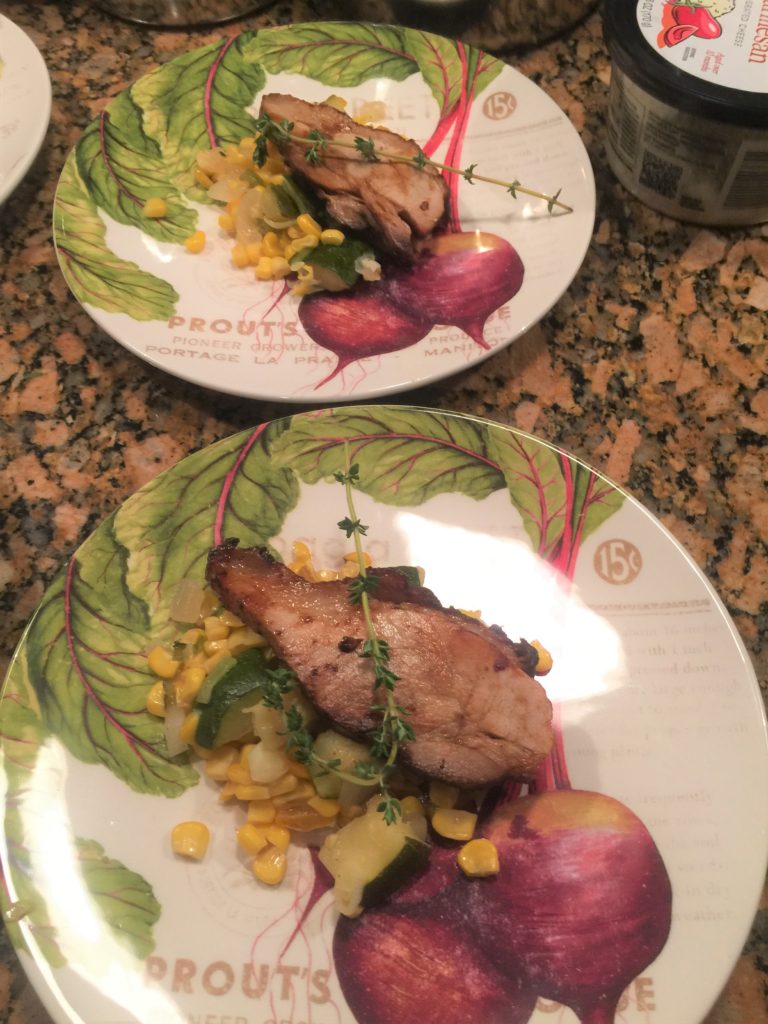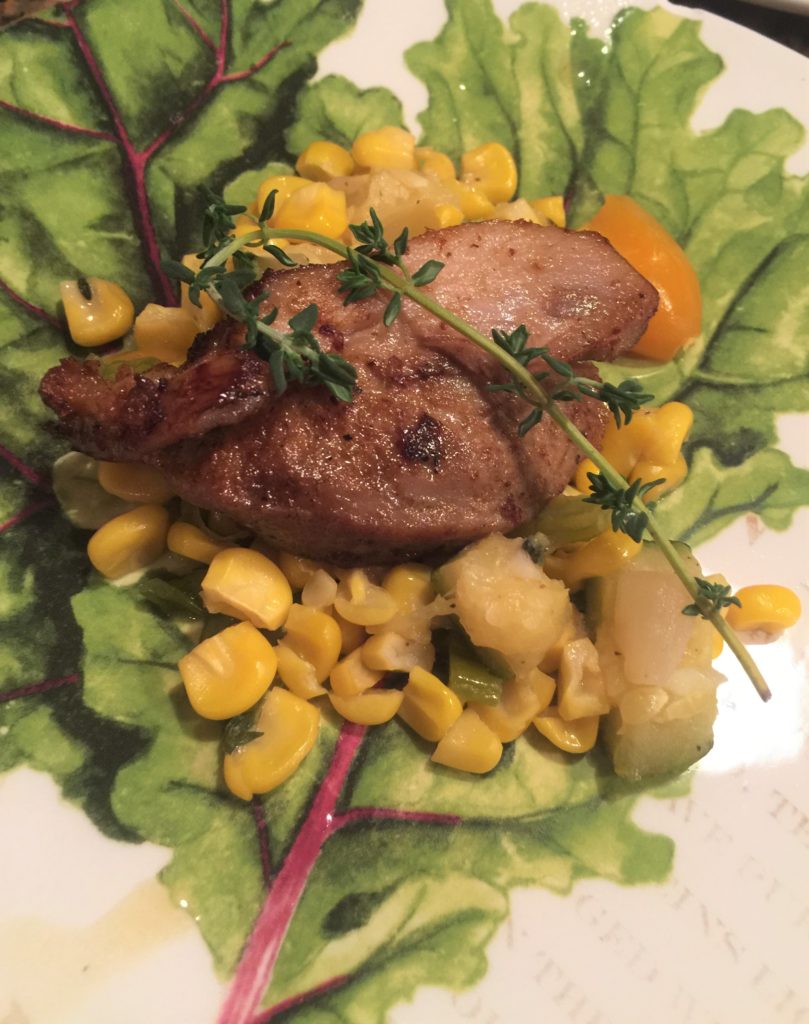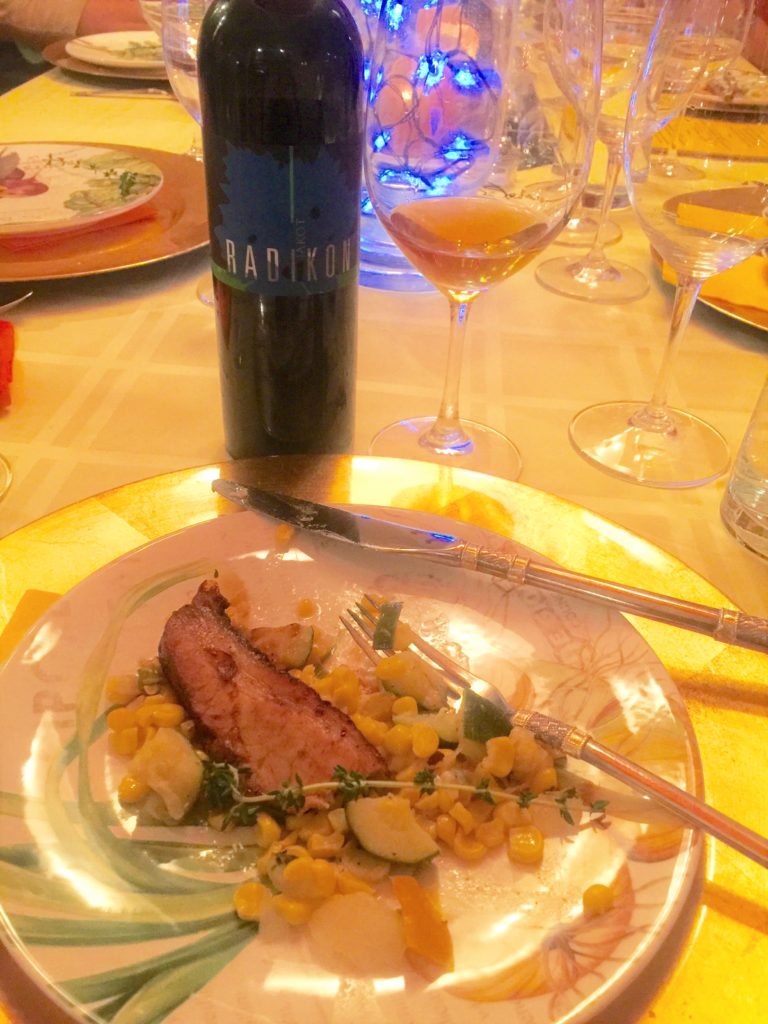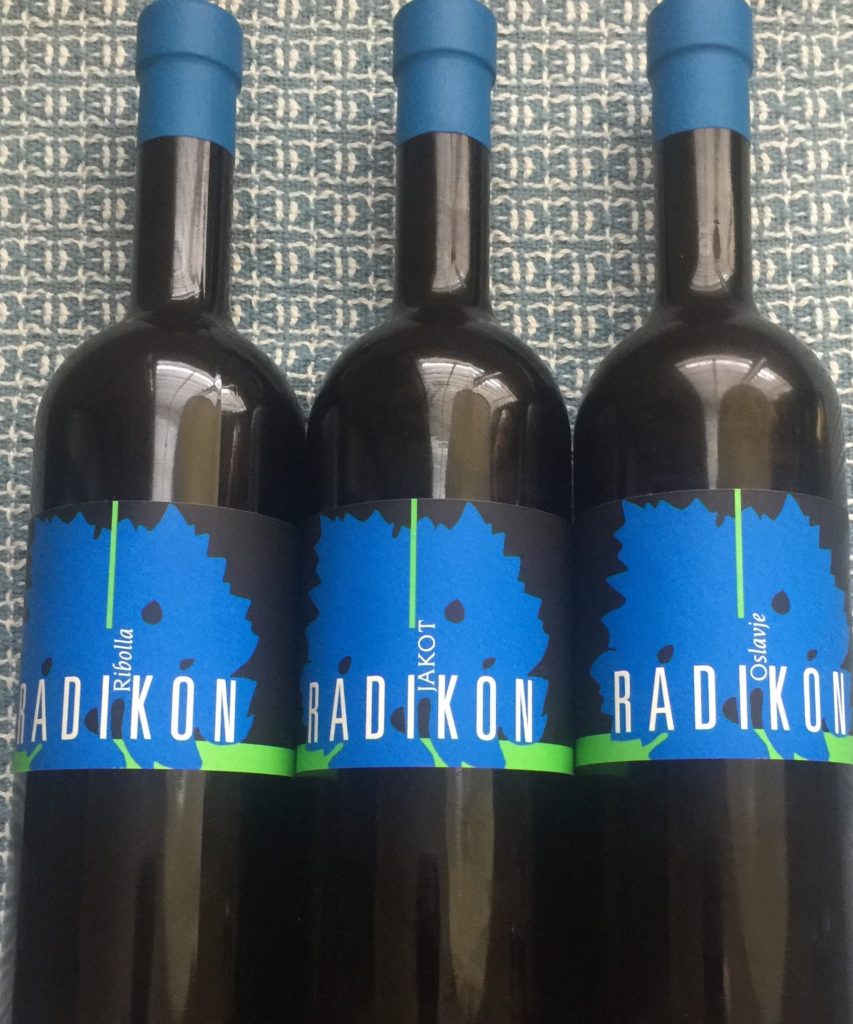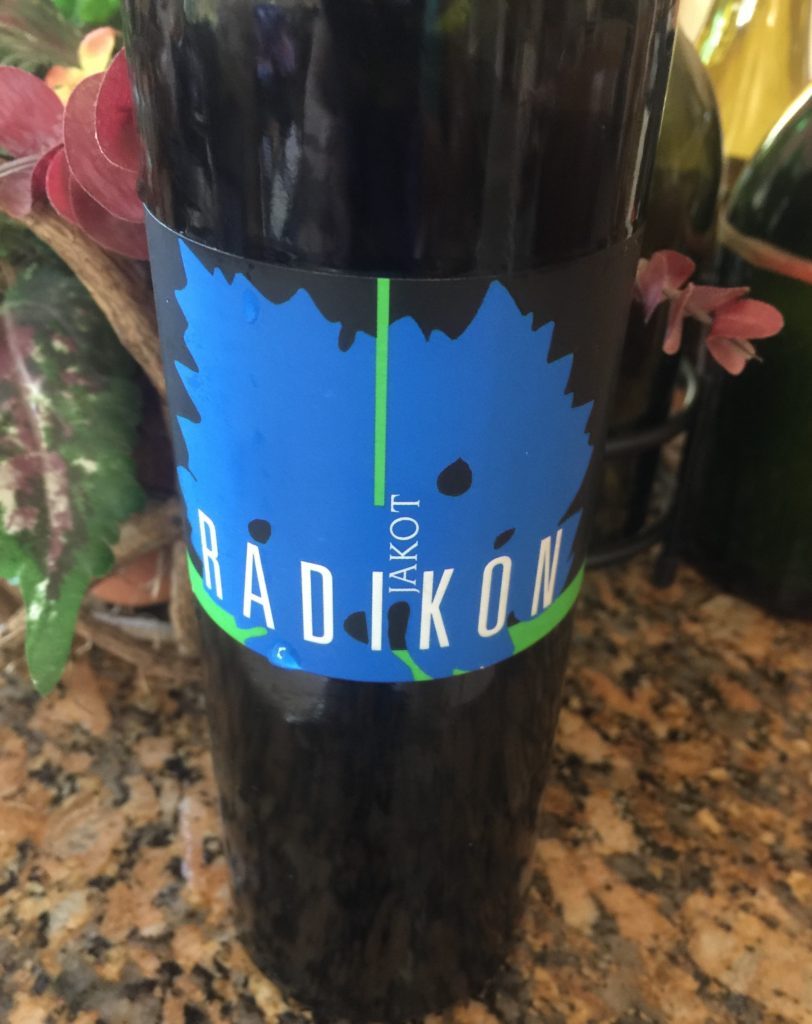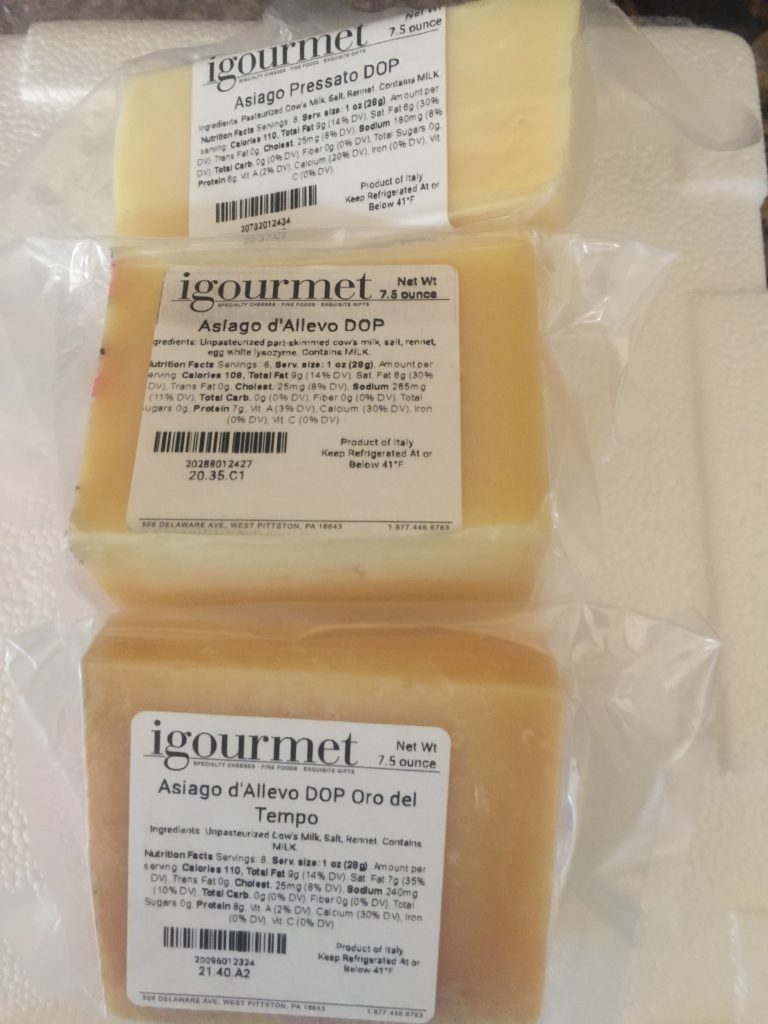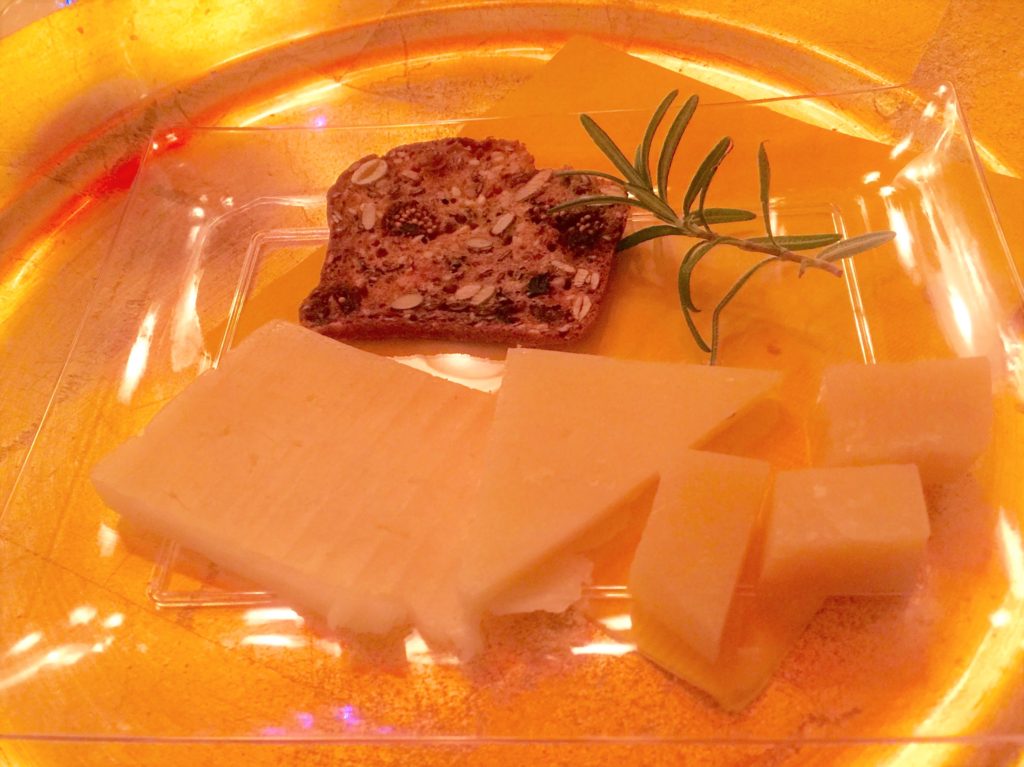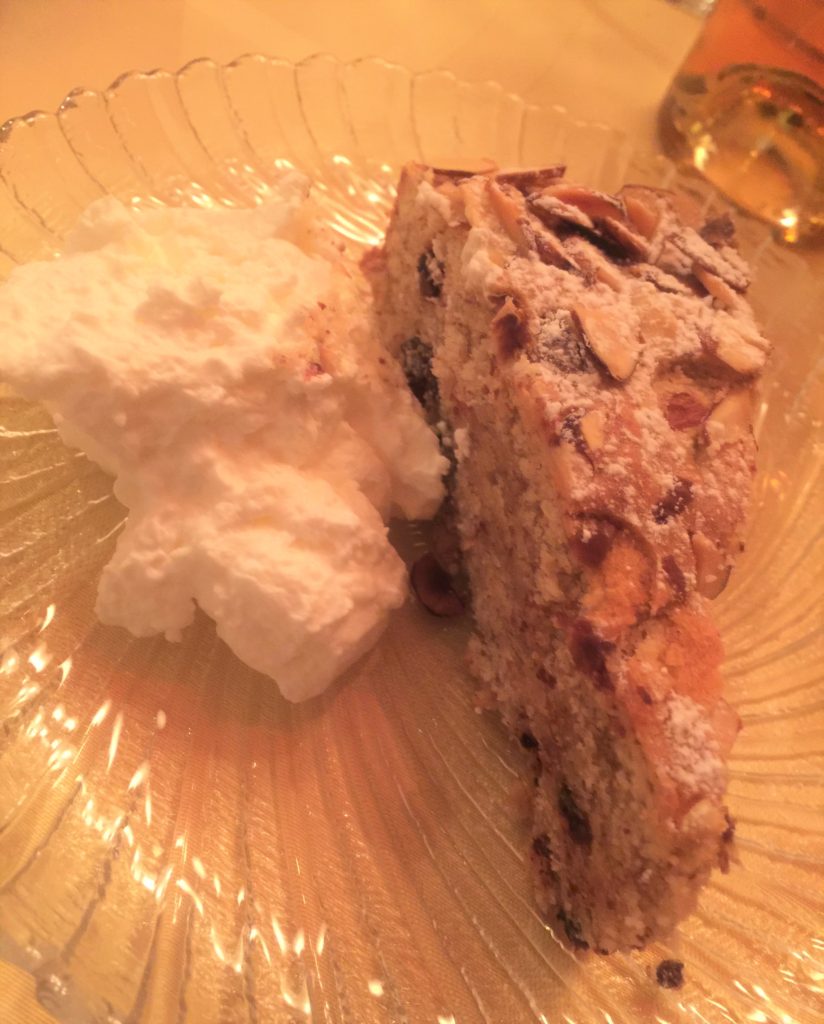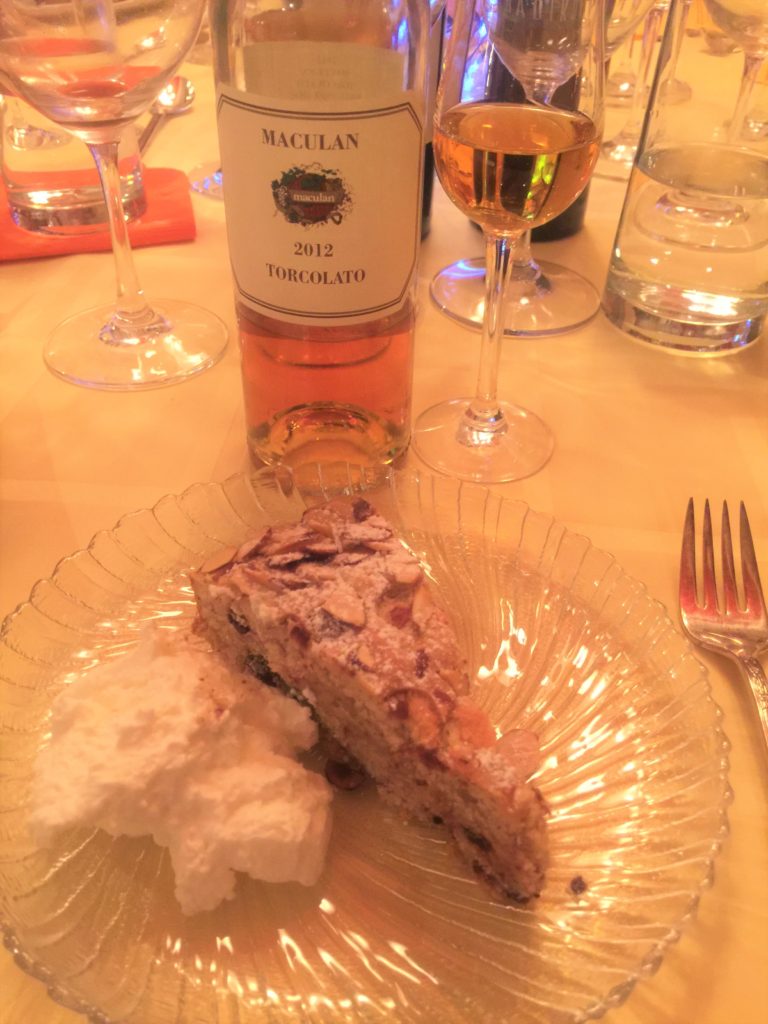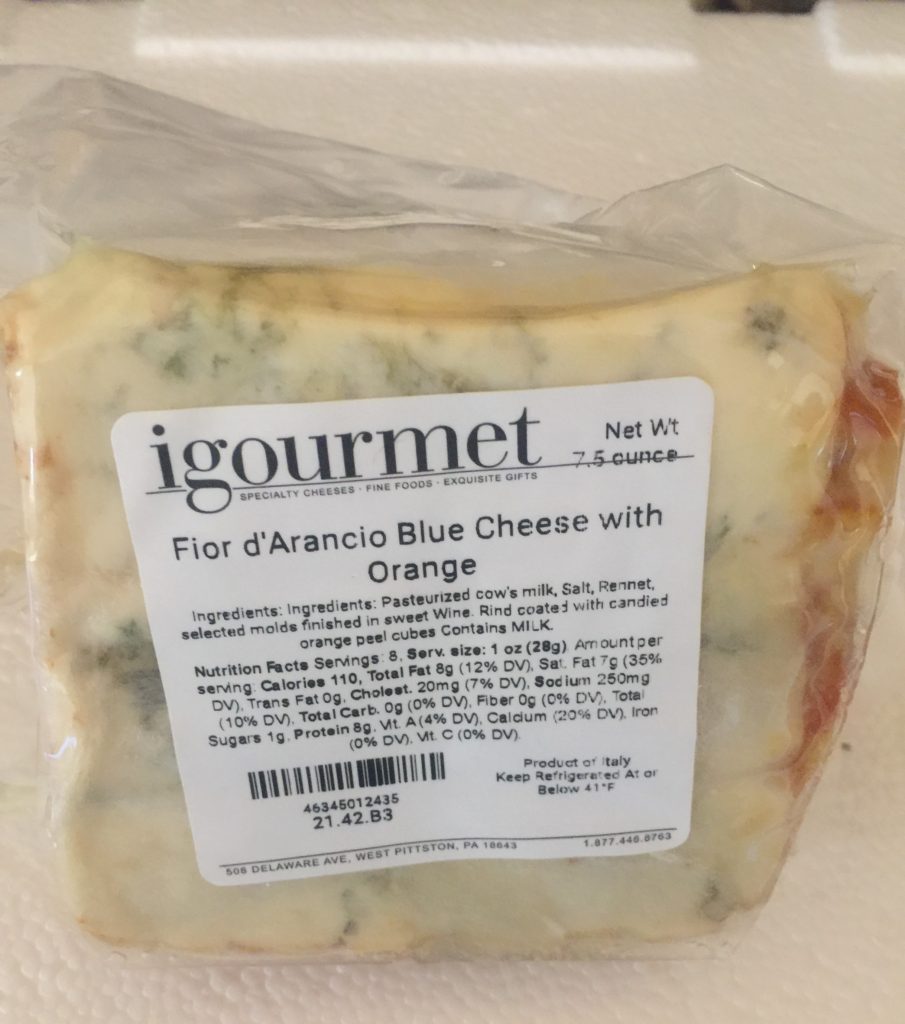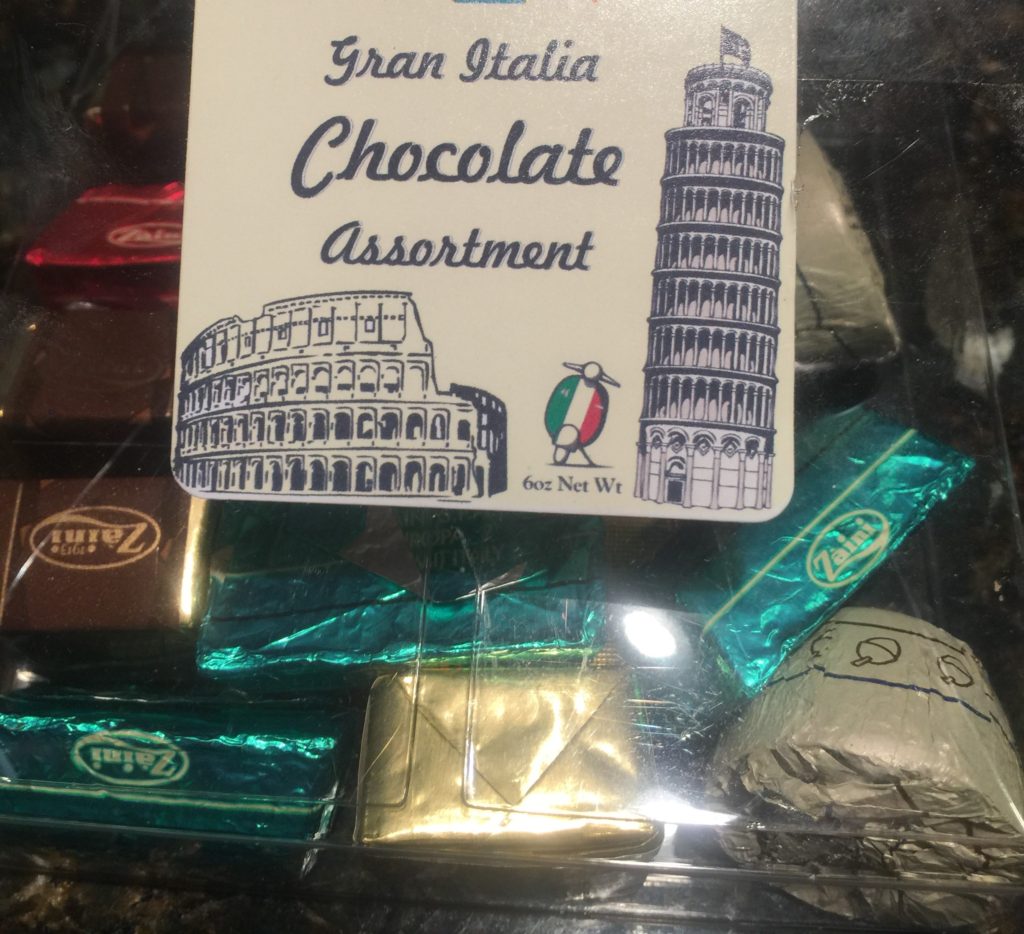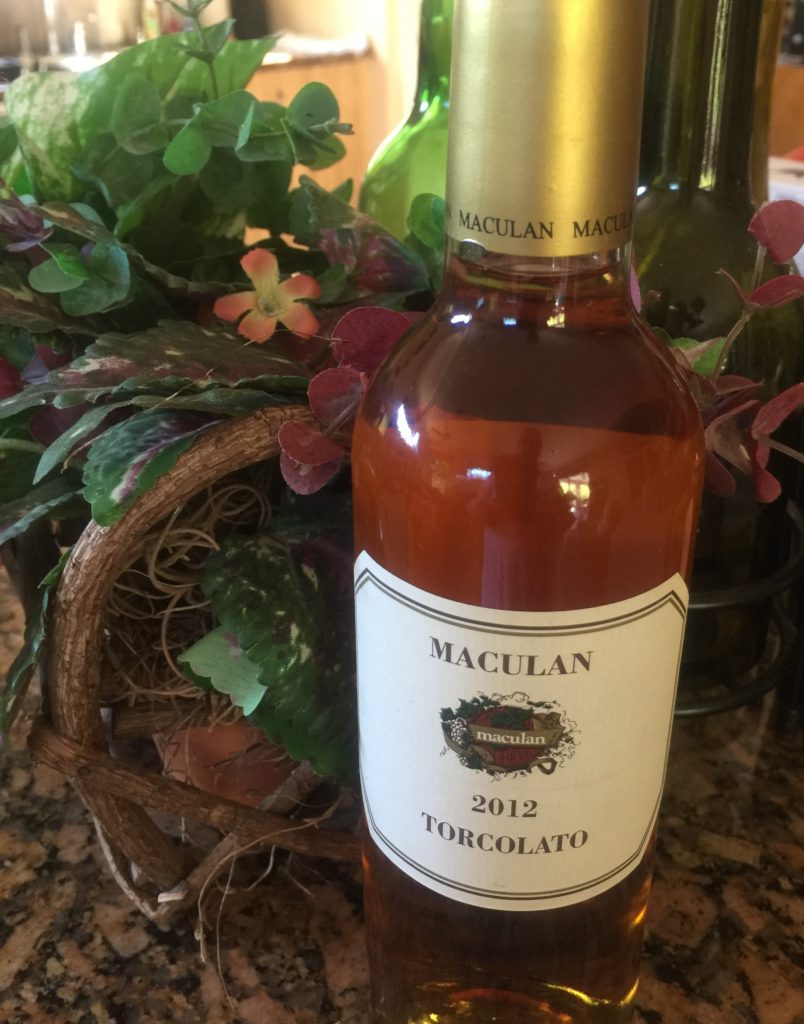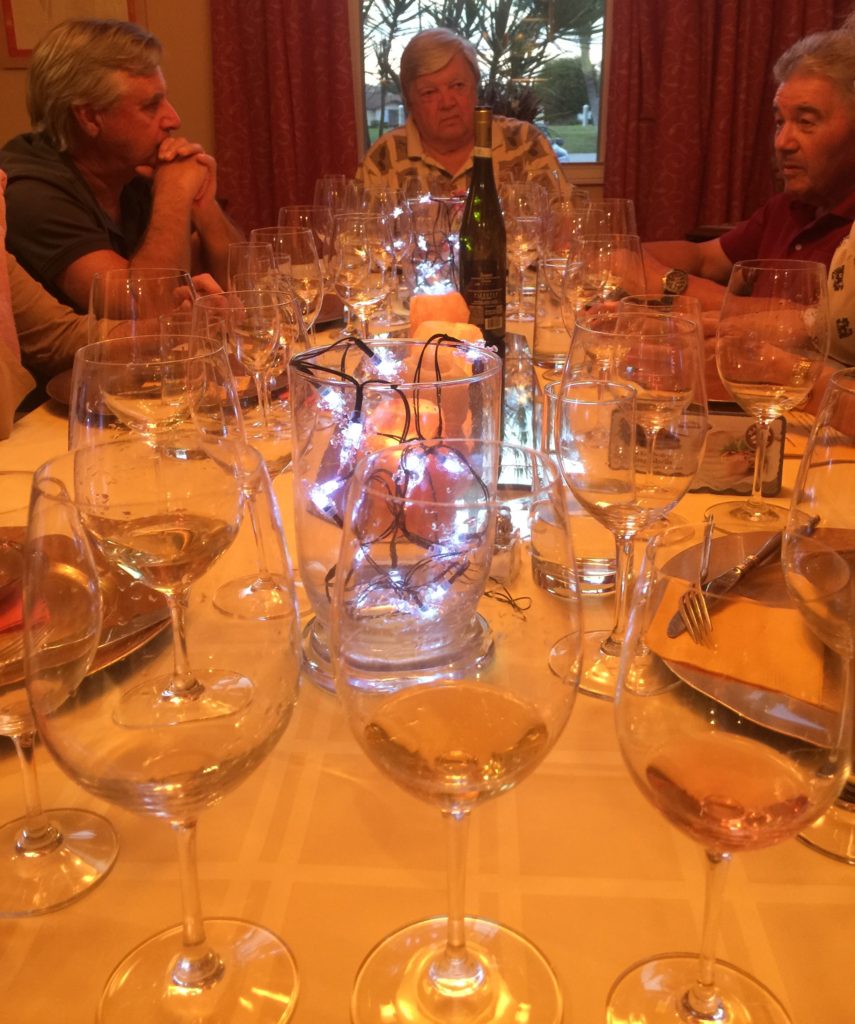Travel along with forkandcorkdivine on our latest armchair adventure as we experience the foods and wines throughout the northeastern Italian regions of The Veneto and Friuli Venezia Giulia. We recently featured ten great examples of wines from these two regions paired with foods selected for their authenticity to the area and how well they compliment the wine.
We love to explore wine from regions that are less familiar to us. It is challenging, educational and really enjoyable to delve into the history of a country or wine region, learn about the people, the grapes, the wines, the winemakers, the cuisine, and everything else that goes along with each new adventure. And what makes it even more challenging is the fact that it all happens right here with the help of the internet, wine books, local wine dinners and tastings and some very good friends in the local wine and food community.
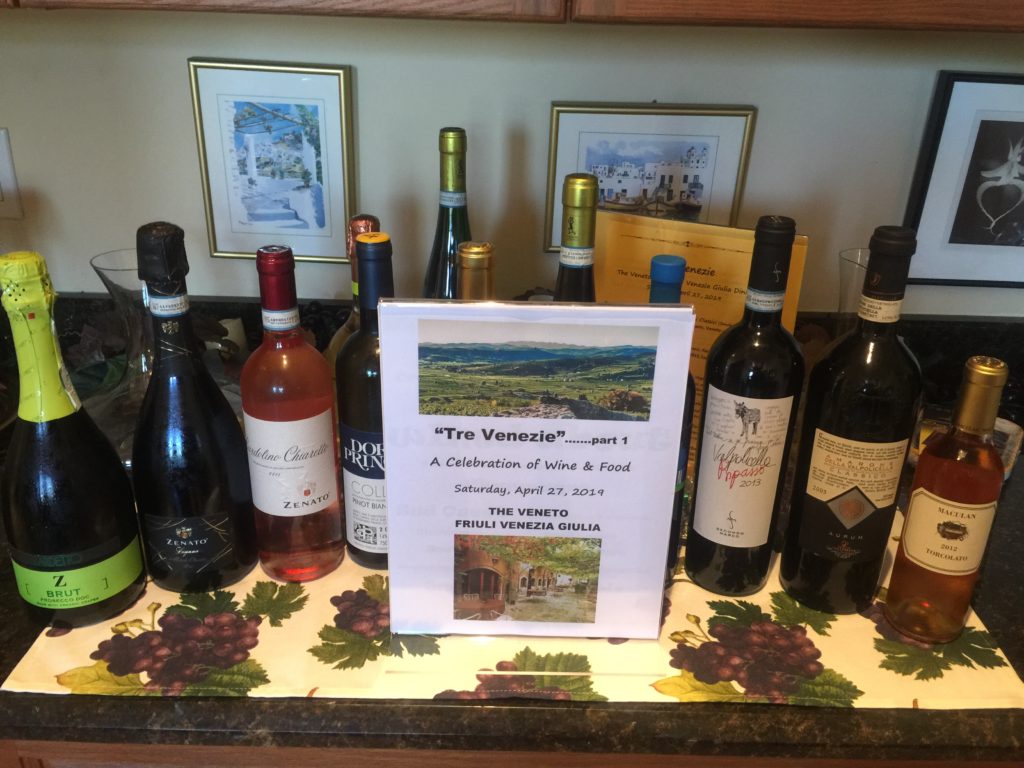
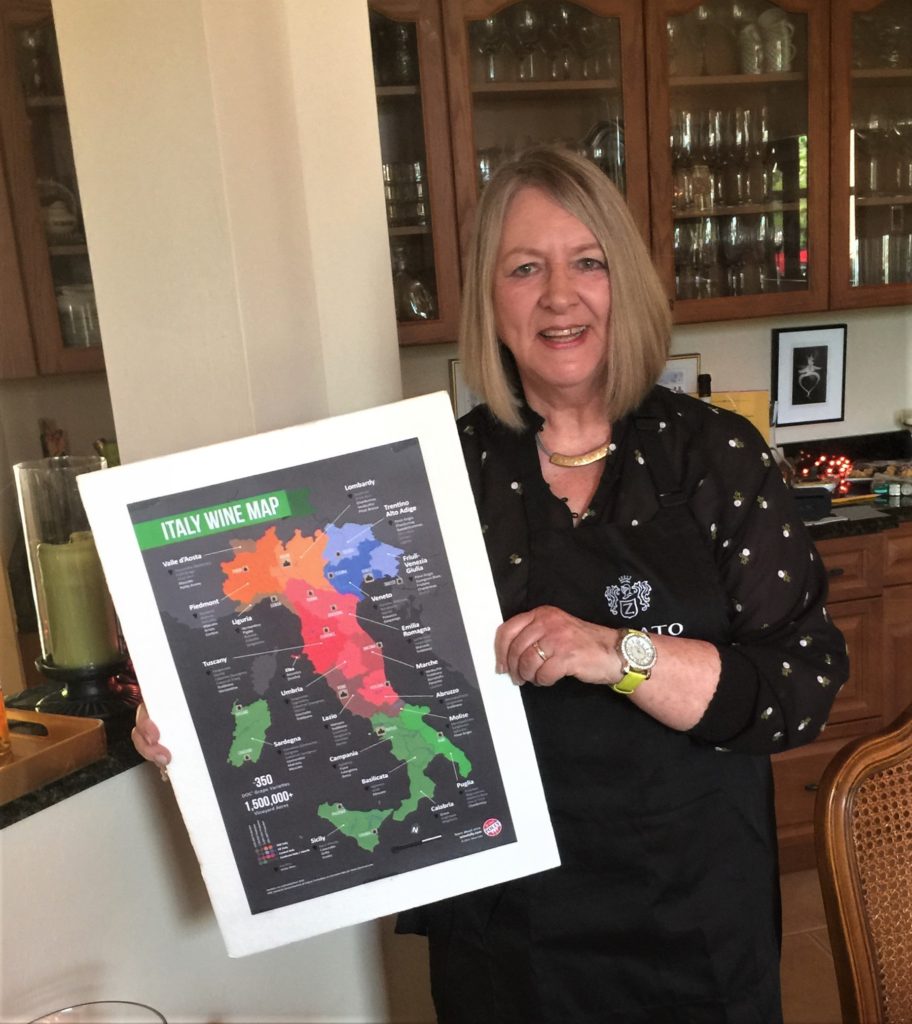
The Veneto is a 7000 square mile Italian wine region just south of Austria and Trentino-Alto Adige and tucked in between Emilia-Romagna, Lombardia and Friuli. It is well known for Prosecco, Soave and Valpolicella but they are not like the old days of mass produced low quality jug-type wines. Now there are many excellent wines – both white and red – produced in the Veneto.
Just to the northeast of the Veneto is the region of Friuli Venezia Giulia, 3000 square miles sandwiched in between Austria, Slovenia, the Adriatric Sea and the Veneto. Friuli is considered by many to be “white wine heaven”. The Collio and Colli Orientali DOCs make some of the best full bodied white wines you will ever taste; and we are about to discover some of these wines – 10 to be exact! – paired with foods from the region prepared and served “forkandcorkdivine style”. If you would like to learn more about the wine regions of the Veneto and Friuli and all of their many DOCs, DOCGs and IGPs, please read articles we recently posted about them. They provide information about the wineries and the wines featured at our dinner.
Now off to dinner! We have included some background on the menu items; i.e. why we selected them, some tips on where to get the ingredients and how to prepare them, and of course some wine information. Buon appetito!
Tre Venezie
The Veneto and Friuli Venezia Giulia Dinner Saturday, April 27, 2019
APERITIVO
Canape di Trota Affumicata on Crostini (Smoked Trout Paté)
Seafood is a staple in this part of the world served fresh, salted or smoked. What better way to start off our Tre Venezie dinner than a simple paté made from smoked trout fillets blended together with cream cheese, horseradish, lemon zest, lemon juice and fresh dill on some Italian crostini served with a bubbly glass of Zardetto Prosecco made from the Glera grapes of Zardetto’s first organic vineyard. Not being familiar with any other source for smoked trout, my faithful friend, the on-line store iGourmet, had the problem solved. Make it the day before and you have a classy little bite to serve with the Prosecco which was full of fresh citrus and floral notes.
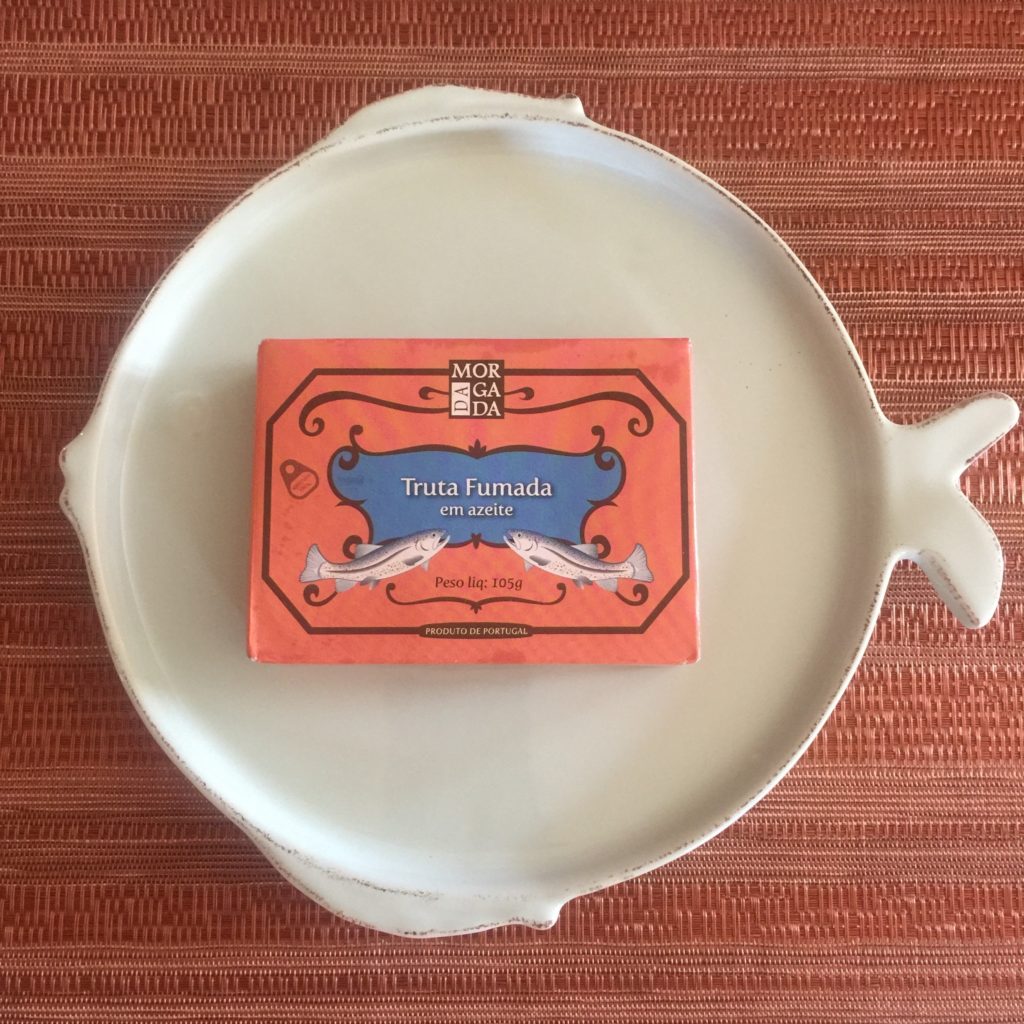
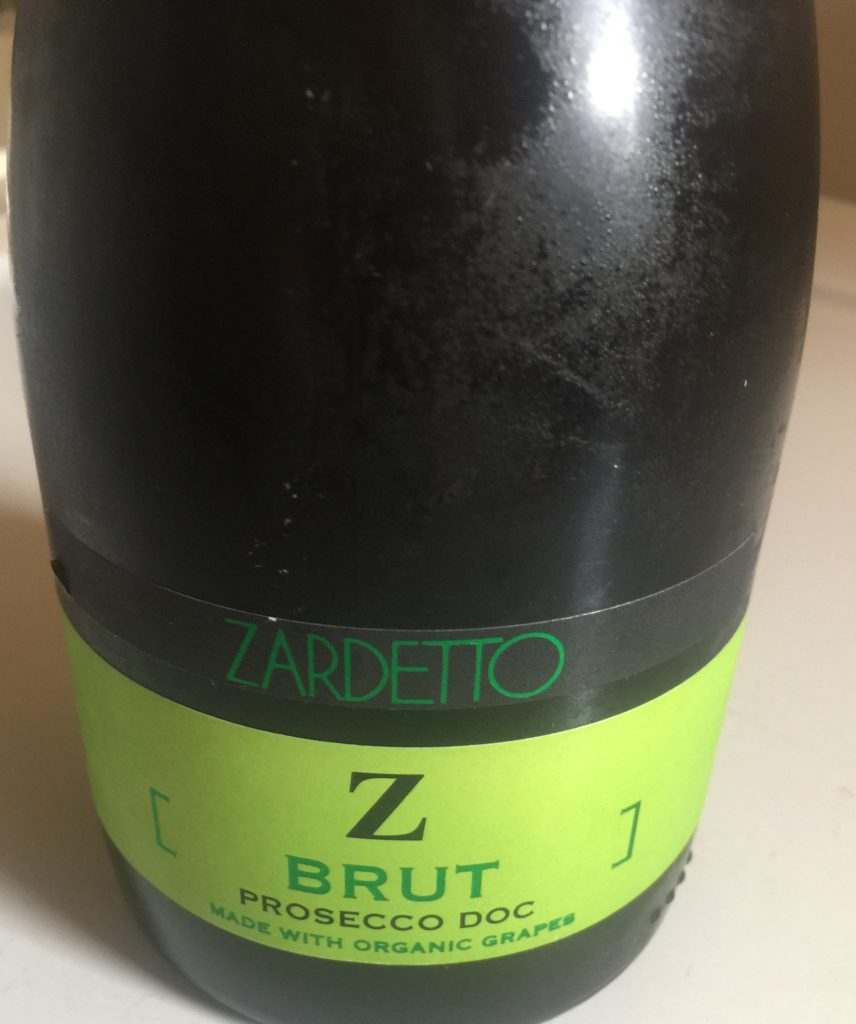
Zardetto Z Brut Prosecco made from Organic Grapes
Zardetto Prosecco Dry Z Brut Organic, Veneto (Glera)
INSALATA
Insalata di Borlotti e Pomodori (Borlotti Beans, Red Onion and Tomato Salad)
The Veneto grows some excellent borlotti beans particularly in the area of Lamon near Belluno. Borlottis are also known as cranberry beans and are tan in color with red, magenta or black streaks. They turn brown when you cook them, and if you can’t find either, navy beans could be substituted. Fresh shelled beans would be preferred, but since I couldn’t source any fresh, I opted to use dried borlottis. The cooked dried beans mixed with fresh tomatoes, red onion slices (soaked in water before adding to the salad) and a little olive oil and vinegar was a perfect dish with the crisp and refreshing bubbly Zenato sparkling made in the classical method from Lugana Turbiana grapes. It was loaded with aromas of white flowers, hints of white fruits and some citrus. I always try to include a colorful salad course as a lighter fare intro to the “main event” which also adds a little more good nutritive value!
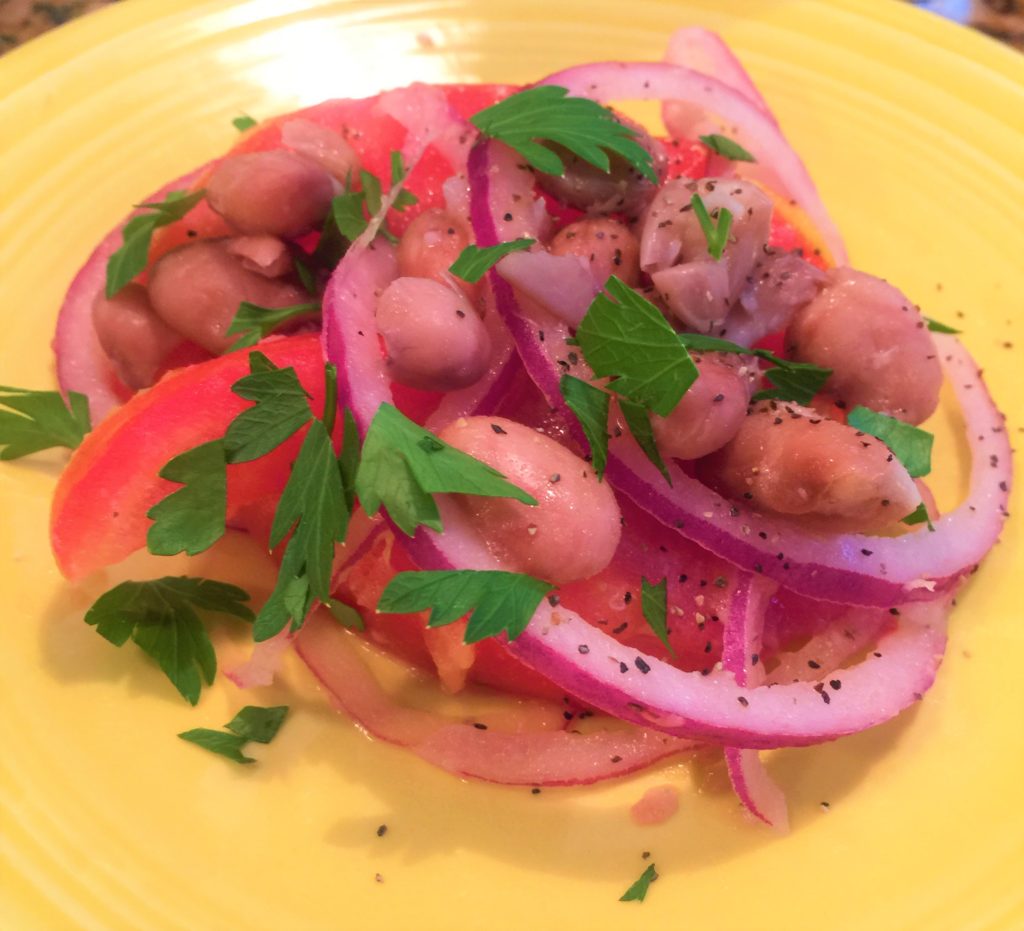
Zenato Lugana Metodo Classico Brut Sparkling 2013, Lugano DOC, Veneto (Turbiana)
PRIMO
Minestrone Primavera
green beans, fava or broad beans, peas, asparagus and ditalini
Chiaretto is the classic Italian rosé from the shores of Lake Garda in the Bardolino DOC. This one by Zenato is an intense coral pink in color made the local blend of grapes – Corvina, Rondinella and Molinara. The grapes are put in the fermentation tank after crushing and the color of the grapes quickly diffuses through the juice. It has “notes of raspberry and black currants with grassy undertones” and is excellent with hors d’oeuvres, first courses and white meat – all according to notes from Zenato. Since we were going to be serving it in the springtime, a spring soup of vegetables (minestrone primavera) seemed like a perfect choice to me. The recipe from my Veneto cookbook called for fresh green beans, peas, fava beans and asparagus with some ditalini added for body. I cheated by using frozen green peas and frozen shelled ready-to-cook fava beans but all else was fresh. I have never ever had fava beans (also known as broad beans) in the shell but couldn’t find any – although I didn’t look very hard! – however my foodie friends who have gone that route said I was very lucky to have missed that opportunity! Frozen ones were just fine, and our local Mario’s Italian Market always has them. Let me warn you that a tiny little bit of ditalini goes a very long way, so whatever amount your recipe calls for, I would start out with a far smaller amount unless you want to serve vegetable stew. The flavors of the primavera were a great choice with the rosé and I’ll be searching for more bottles of Zenato Chiaretto.
Zenato Bardolino Chiaretto 2017, Bardolino DOC, Veneto
(Rosé blend – 65% Corvina, 25% Rondinella, 10% Molinara)
Capesante Gratinate con Mandorle e Arancia
(Scallop with an Almond Orange Gratin)
Collio Gorizia borders on Slovenia and the Adriatic Sea which makes for especially great food and wine pairings, and makes you glad you are not one of “those people” who say they only drink red wine! I would so hate to miss out on these wonderful wines. Seafood is a requirement and the wines made here are similar to the wines right across the border in Slovenia. The borders have changed so often between Slovenia and Italy, you can imagine it is quite multi-cultural. This Doro Prinčič Pinot Bianco from the Collio became one of my new favorites! Sandro Prinčič tried the orange winemaking method along with his neighbors in Collio and Slovenia but decided it was not for him. He makes whites (and a few reds) with lots of concentrated fruit that have been aged in stainless steel with resulting crispness, and aromas of pear, lime and orange. This one was 100% Pinot Bianco, and I can’t wait to try some of his others. The tasting notes suggested pairing with almond crusted seafood, so between that and anticipated aromas of oranges, this scallop marinated in a fresh orange juice, EVOO and garlic then baked with a sprinkling of fresh bread crumbs, ground almonds and orange zest would be hard to beat! Invest in a few inexpensive reusable scallop shells, serve one U-15 scallop each, pop them in the oven for 10 minutes then crisp up quickly under the broil and you have a really beautiful delicious appetizer that will have your guests requesting the recipe – mine did!
A number of my recipes came from “VENETO – Recipes from an Italian Country Kitchen” by Valeria Necchio and “Classic Food of Northern Italy” by Anna Del Conte.
Both books have excellent recipes, beautiful pictures and give additional information about the foods, ingredients and styles of cooking in each region.
Doro Prinčič Pinot Bianco 2017 Collio DOC, Friuli (100% Pinot Bianco)
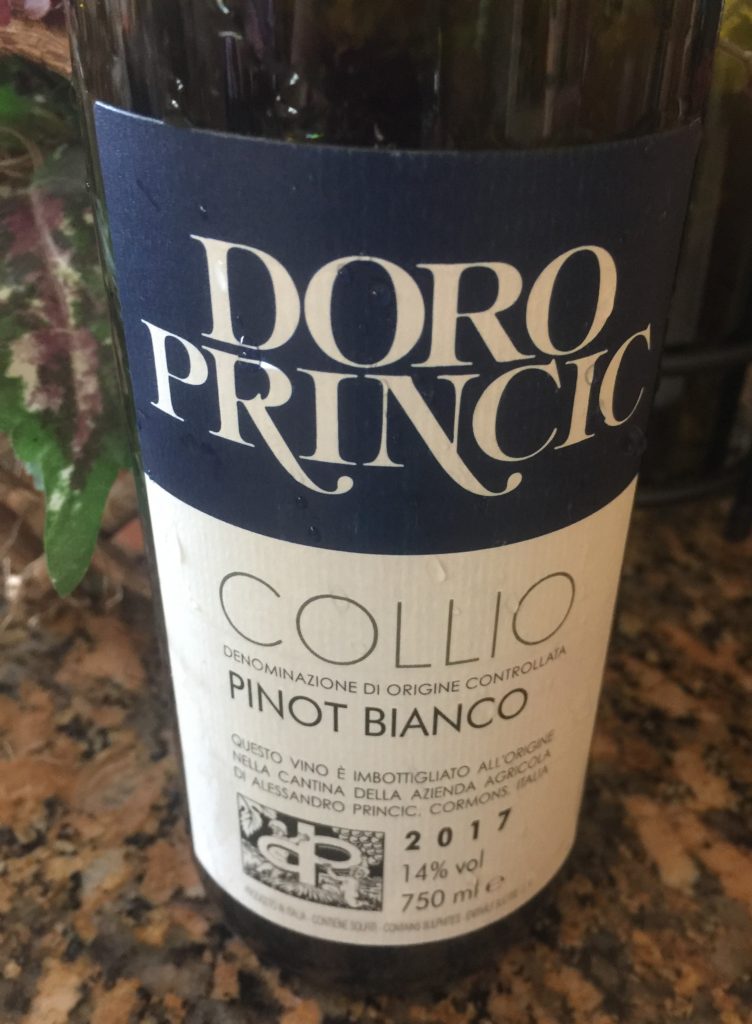
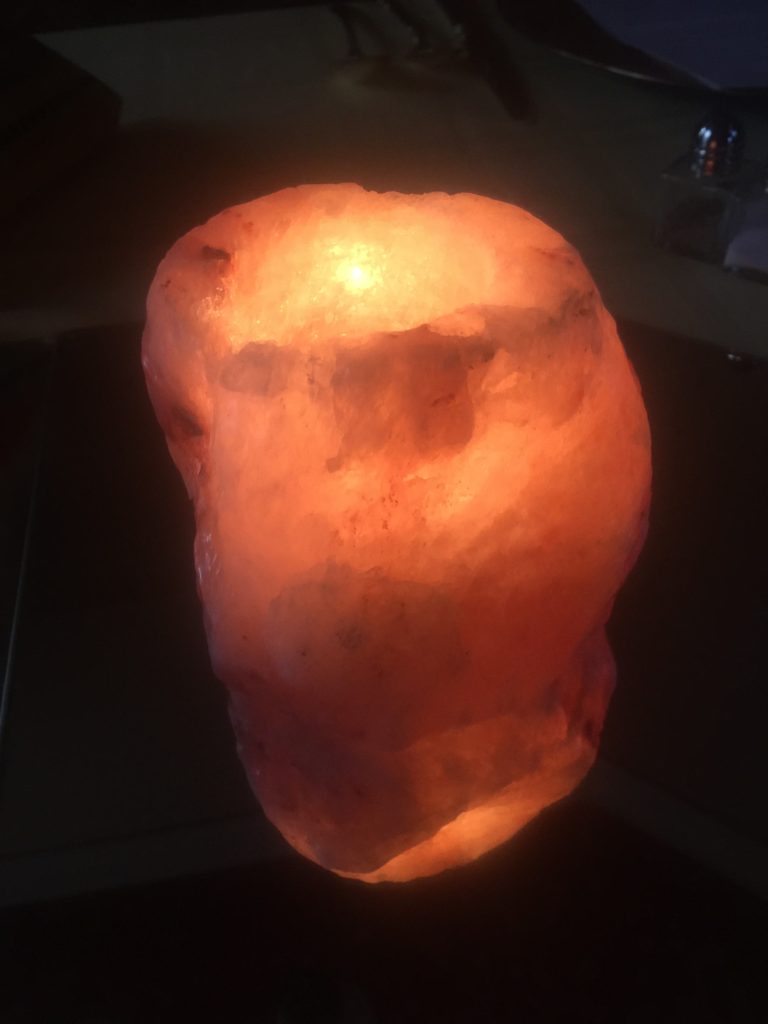
Himalayan Salt Candle 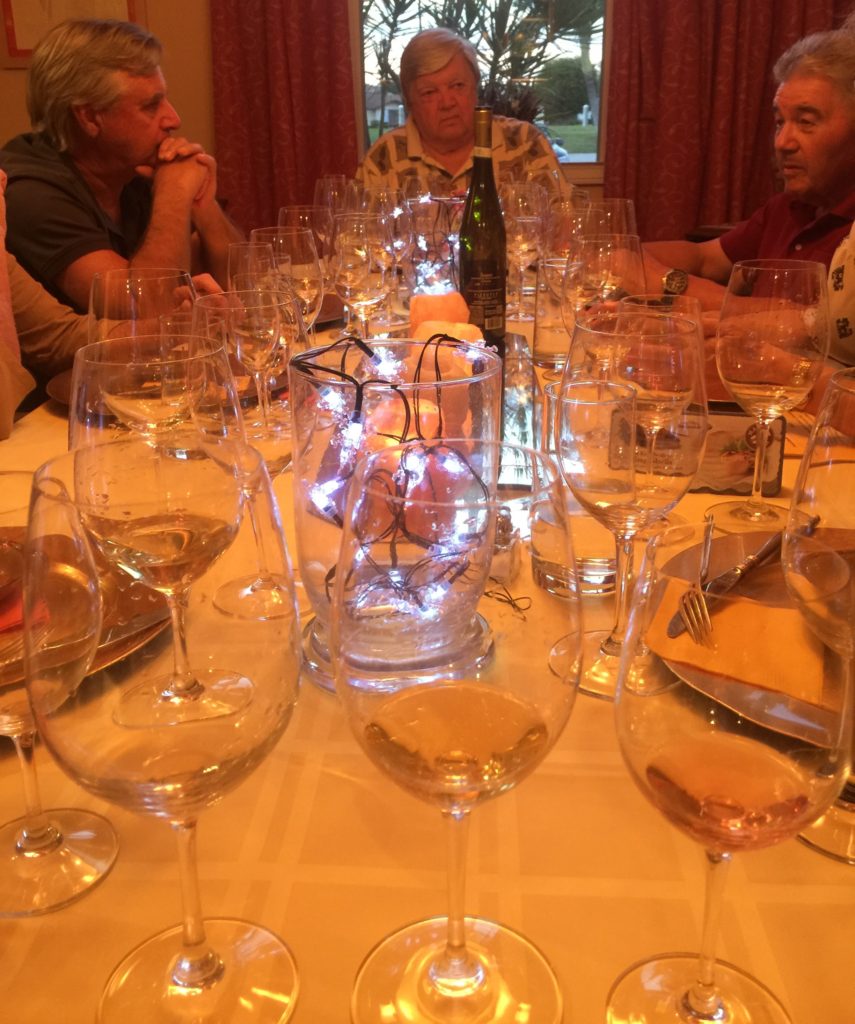
Frico Friulano with Arugula (Friulian Cheese Tart)
As soon as I mentioned to my fabulous cook and foodie friend, Anita Jenkins, that I was planning a menu to include foods of the Veneto and Friuli, she immediately told me what she wanted to contribute, and the rest of us are so happy that she prepared it! Frico Friulano, or Friulian Montasio Cheese Tart, is a classic dish from Friuli that incorporates Montasio cheese, rice, potatoes and onions into a fried up ooey gooey brown tart that you will absolutely love! And don’t leave out the surprise ingredient – peperoncinis. If at all possible, be authentic and get the Montasio cheese. Both Anita and I sourced ours from iGourmet.com. Anita added a bit of arugula tossed in olive oil and a bit of lemon juice which gave a bright peppery taste on the side.
Anita’s recipe came from another book that we both find really helpful if you want to learn about the grapes and wines of Italy along with some recipes and food pairing tips. “VINO ITALIANO The Regional Wines of Italy” was written by Joe Bastianich and David Lynch and includes recipes by Lidia Bastianich and Mario Batali. It was published by Clarkson Potter.
It was no surprise that Lidia suggested serving the Frico Friulano with a rich Friulian “super white” wine such as Bastianich “Vespa” or Jermann’s “Capo Martino” or a spicy, peppery Refosco wine. Since I had tasted the Vespa before, I decided to go the whole way with Bastianich and got a great bottle of Vespa 2015 from the Venezia Giula IGT. The grapes are grown in Colli Orientali vineyards but the wine must be labeled as an IGT. This wine is definitely super and did not disappoint me the second time around. It’s a blend of Chardonnay and Sauvignon Blanc grapes with a tiny bit of Picolit that have been fermented 50% in stainless steel and 50% in oak casks. The 2015 gave us layers of fruit and minerality and while it drank well and no one complained, it begged for several more years in the cellar. Sometimes you just can’t wait!!!
Yes that is a picture of a wasp on the bottle of Bastianich “Vespa”. Vespa means wasp in Italian and they are quite attracted to ripe grapes. Most of us know Vespa as the maker of those very popular Italian motor scooters.
Bastianich Vespa Bianco 2015, IGT Venezia Giula
From Colli Orientali DOC vineyards, Friuli (Chardonnay and Sauvignon Blanc Blend)
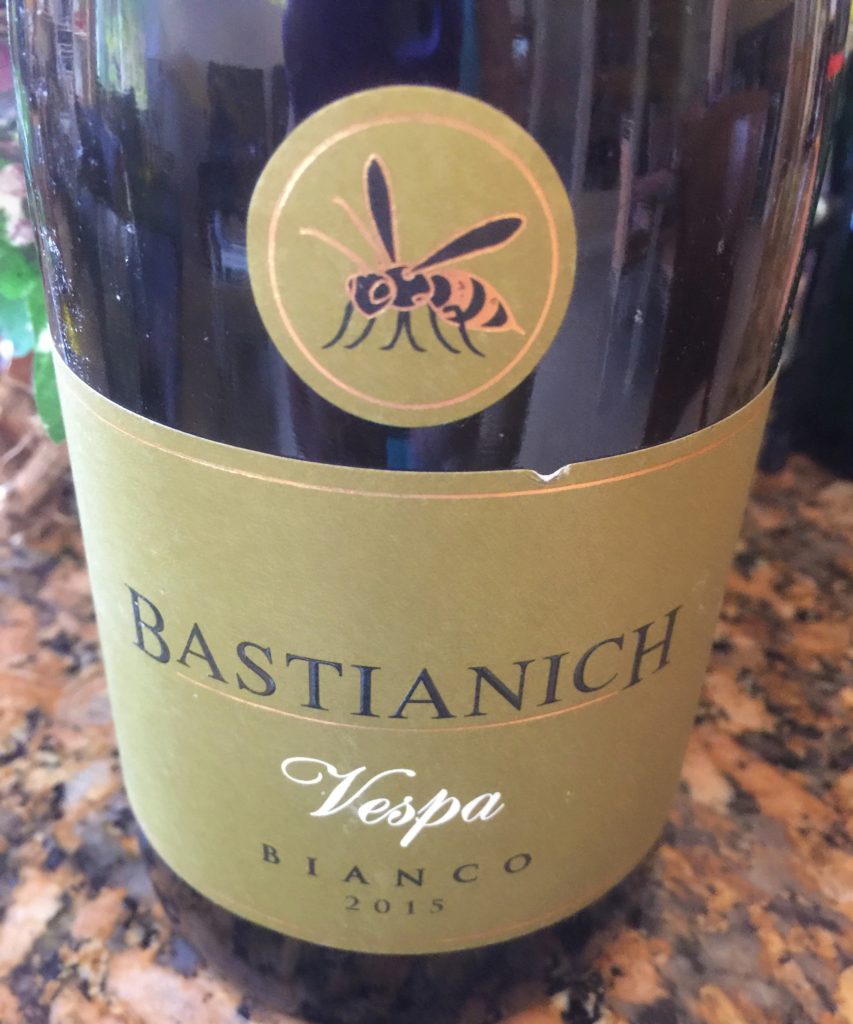
Porcini Gnocchi with Parmesan in a Butter Sage Sauce
When it comes to side dishes in the Veneto, there are a number of delicious options – polenta, risotto, handmade pastas (especially bigoli which ideally requires a special “bigoli pasta making machine”) and then there is gnocchi.
Let’s back up a bit to the wine selection since that is how I usually begin. Pieropan is the oldest family-run estate in Soave and considered by many to be a top Soave producer, so that seemed like a winner for me. I especially wanted the Pieropan “La Rocca” to be our representative Classico Soave because it is 100% Garganega and is barrel-aged for about a year resulting in a wine that is intense yellow in color with notes of exotic fruit, nuts, and hints of spice. It really pays to read the “tech sheet” and I always search the internet until I find one for my wine which is not always an easy task. Being successful this time, Pieropan recommends serving this wine with a strong flavored dish “particularly risottos such as porcini”. I can’t argue with the winemaker, so something porcini it would have to be. Gnocchi also works well for this type of dinner party as you can make them in advance, freeze, and then cook just before service which is a lot simpler for the hostess/cook than standing at the stove for a very long time making risotto while your guests are waiting. I found several recipes for porcini gnocchi, settled on one, reconstituted the dry porcinis and chopped them until almost paste-like, baked the potatoes, riced them, added the porcinis, some flour and kneaded away until smooth and slightly sticky. I have learned that the best gnocchi results from not adding too much flour! It is much easier to add a little more as you go than working with dry over- floured dough. Next I rolled them out into ropes about 1/2 inch thick, and cut them into 1 inch long gnocchi. Put them individually on parchment paper lined baking sheets, freeze until firm and you can then consolidate into a freezer storage bag keeping frozen until just before you are ready to pop them into boiling salted water for service. Of course if you really have nothing else to do that day, you can cook and serve immediately! For service, I added the cooked gnocchi to a melted butter sauce with fresh sage leaves, and finished with grated Parmigiana cheese. One other reminder at time of cooking, put your large pot of salted water on the stove and keep it almost at a rolling boil just waiting for your gnocchi. I had turned down the heat while cooking another previous course, didn’t wait until rolling boil, cooked them and then added some pasta water to the sauce just as my recipe called for and my gnocchi stuck together more than I would prefer. Next time I would make sure that water was boiling away and leave out the pasta water! But that is how we learn. However, the flavors of those porcinis, sage and Parmesan could not be beat especially with the La Rocca Soave Classico from Pieropan. Another perfect pairing!!!!
A bigolaro is a specific type of pasta press used to make bigoli, a long pasta typical of Veneto. Depending on the area, they are made from whole wheat or white flour. If you can’t get fresh or dried bigoli, you can make do with thick fresh spaghetti but in my opinion there is just no good substitute for fresh pasta.
I had the pleasure of enjoying fresh homemade bigoli prepared and served by Chef Emanuela Calcara at Palladio Trattoria in Bonita Springs.
Bigoli with duck ragu is a specialty of Vicenza and Padua . In other areas of Veneto, you will probably see it spooned over potato gnocchi.
Pieropan “La Rocca” Soave Classico 2016 (100% Garganega)
Soave Classico DOC, Verona
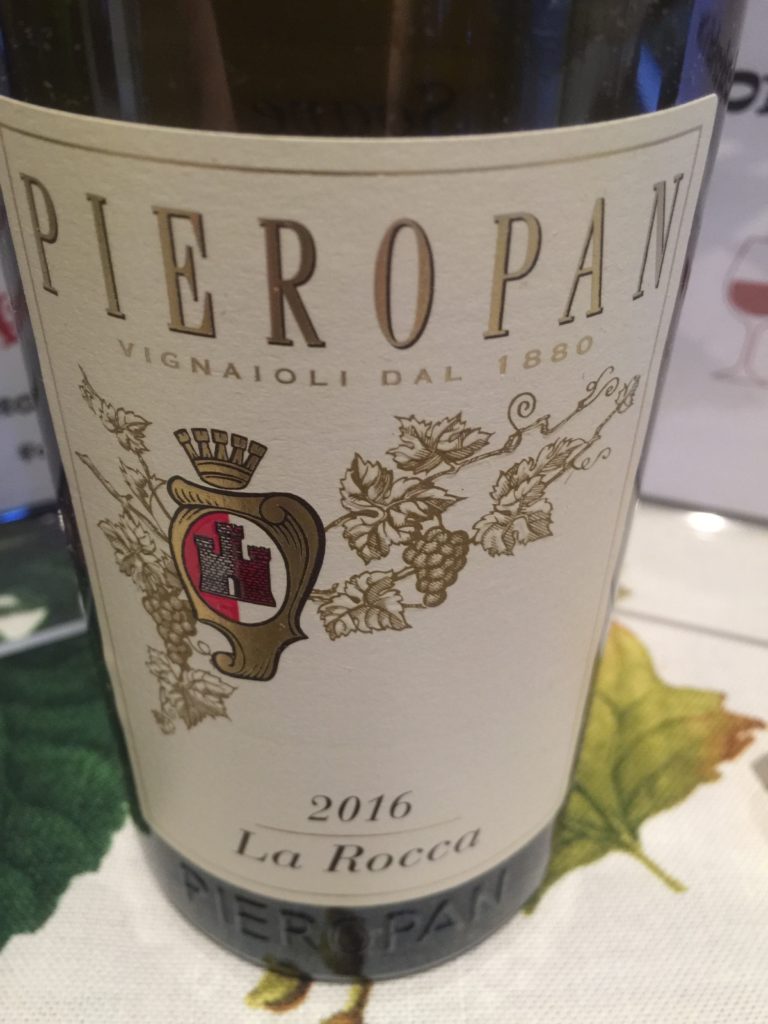
SECONDO
Crispy Pork Belly with Corn, Yellow Peppers and Zucchini
I so wanted this pairing to be a “shining star” of the evening as Radikon wine has been on my bucket list of wines for several years. The food had to do it justice even though this would be my very first taste of a Radikon ever! I knew that orange wines can be a little challenging to pair with food; however we had previously served Slovenian orange wine paired with recipes from my Slovenian cookbook and it was an excellent pairing. I searched the internet for additional suggestions and discovered a New York sommelier had presented a wine dinner of all Radikon wines and had in fact paired the Radikon Jakot with roasted pork belly and grilled vegetables of corn and yellow peppers. I decided to follow her lead! While I have eaten pork belly at a few local upscale restaurants and thought it delicious, I had never cooked it. It is a bit different than putting a few slices of bacon in a frying pan. But that has never stopped me before!
Staff at my local Publix meat department pulled out a 10 pound box of pork belly for me to see, sliced off a 2 pound piece as I requested and I was ready to go. I opted to use a recipe that called for seasoning the meat with salt, sugar, and black pepper overnight. I also added some smoked paprika since I don’t have a problem blending together several recipes that sound good.
The next day I roasted the meat for 30 minutes at 450 degrees, and then reduced the heat to 275 for another hour of roasting until tender but not overcooked. Be sure to save the rendered fat. You will need it later. After roasting, cool, wrap and refrigerate for at least a few hours or up to 2 days. I was planning to cook it the next day, so even though it was really simple, this was a 3 day process for me. Yes, dinner parties require advance planning and a production plan! That is a whole article in itself.
I sliced the chilled meat into individual portions, and at time of service put that rendered pork fat into a skillet over medium heat and cooked it until well-browned on all sides. The color and aroma was terrific!
For a vegetable, I opted to saute fresh corn cut off the cob with zucchini, yellow peppers and onions. For seasoning, I added garlic, thyme, lemon zest and juice, salt and pepper and it was absolutely delicious.
At point of service, place a small bed of the colorful fresh veggies on each plate, top with a piece of that beautiful crispy pork belly, season with some fresh cracked black pepper and a sprig of thyme. Beautiful!!!!
Now to the wine………….our guests were amazed at the amber color of the Radikon Jakot even though we had all had quality orange wine at a previous dinner. We served it at room temperature as recommended and took our first sips of this 100% Friulano. We have already talked about this pioneer in orange wine making in our previous forkandcorkdivine article, so you can learn more about him there. The Jakot was macerated with the skins for about 3 months with no temperature control and no sulfur, then aged in huge Slavonian oak casks for 3-4 years, then bottled and aged for several more years. So all in all, a current vintage of Radikon wine is always 7 years ahead of today. The nose on this wine was loaded with dried fruit, flowers and minerals and the flavors were HUGE with layers that kept on coming! It was really an amazing experience…….I can’t wait to have another! And the food pairing? It was indeed perfect with that fatty pork belly and those fresh crisp vegetables just like that somm suggested. Guess they really know their business!
Radikon Jakot 2012, Venezia Giulia IGT, Collio, Friuli (100% Friulano orange wine)
Spezzatino (Slow Cooked Beef Stew) on a Baked Polenta Slice
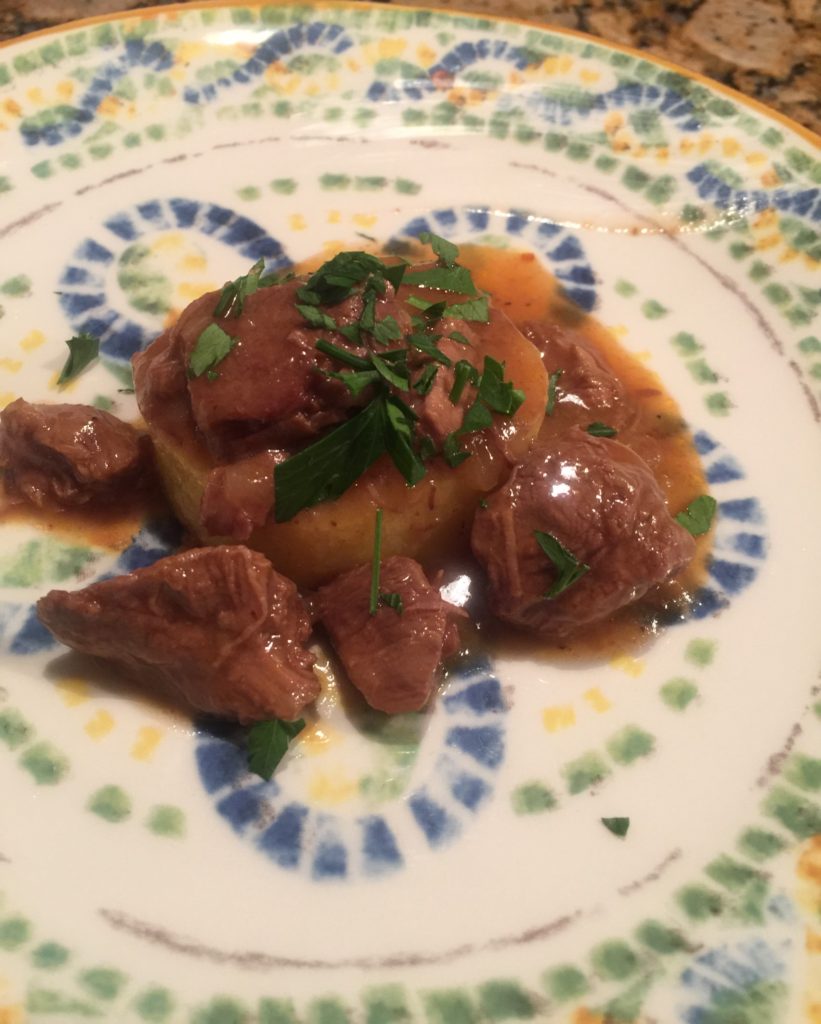
Since this was primarily a “white wine dinner”, I really didn’t want the two reds to feel neglected. It seems that Venetians have not been used to eating a lot of beef as it was hard to obtain, but they did use horse meat and donkey which is featured in many traditional dishes. I am sure my dinner guests were a bit concerned that I may come up with a way to serve it to them, but I absolutely had no interest in that! Beef it would be!!!! I used a recipe for Spezzatino (slow cooked beef stew) taken from my Veneto cookbook and it worked well for this course. The stew was not an Americanized type of beef stew with vegetables; it consisted of just beef and onions cooked in beef broth with a bit of tomato sauce and seasoned with some juniper berries. Here again I added some juniper berries onto my iGourmet order and I am now ready to make many future recipes with juniper berries. This was a good addition to my preparation mix since I cooked it the day before, then continued to cook down in a slow-cooker the next day for service. I opted to serve it on an oven baked slice of polenta that was topped with Parmesan cheese and seasonings. It made a great presentation and it certainly did pair well with the wine.
And the wine? What better lead in to the next course than this medium-bodied Ripasso Valpolicella Classico Superiore by Secondo Marco. We call it our “baby Amarone” since it’s aging process included resting on the skins of dried grapes previously used to make Amarone. You get that rich texture of the ripe dried fruit flavors, spice and floral notes all from a blend of Corvina, Corvinone and Rondinella. Another great elegant and food-friendly wine from the Veneto.
Secondo Marco Ripasso della Valpolicella Classico Superiore DOC 2013
Valpolicella, Veneto (Corvina blend)
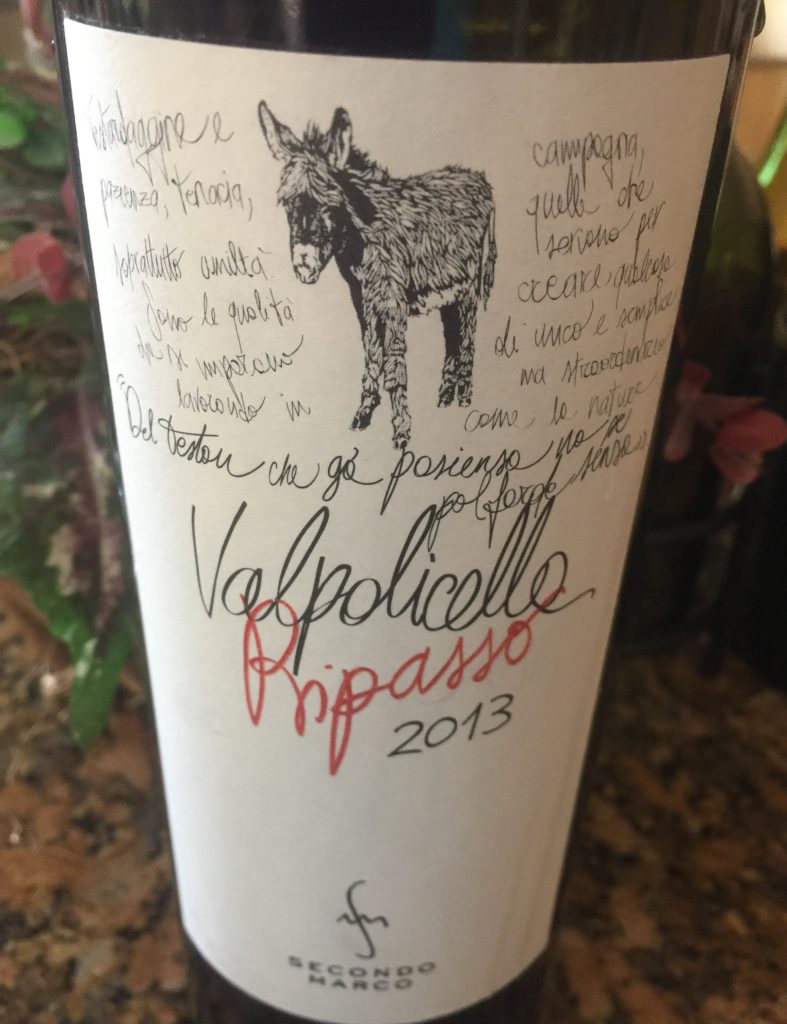
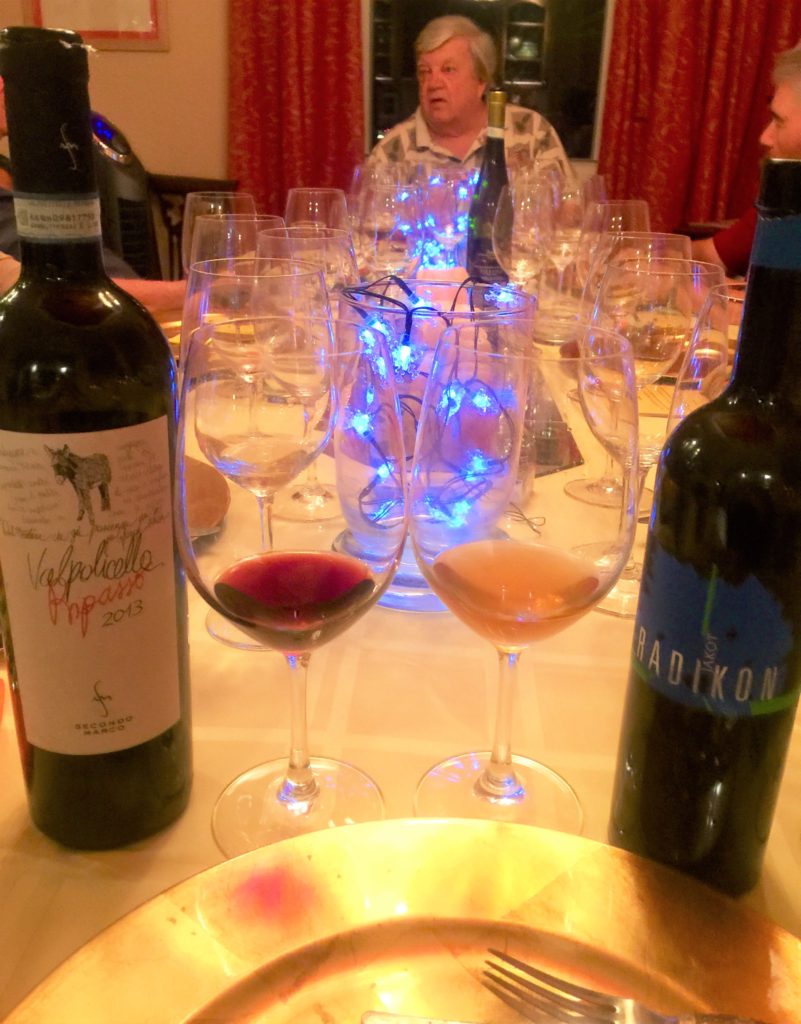
The red and the orange!
FORMAGGI
Asiago DOP – “through the ages”
Pressato DOP: youngest
D’Allevo DOP: aged 5 months
D’Allevo Oro del Tempo DOP: aged 1 year
No Veneto wine dinner experience would be complete without serving Amarone. Not wanting to have an additional meat course, a cheese course made up of Asiago cheeses made right here along with the Amarone seemed very appropriate.
Amarone is made by the appassimento method which is to let some Corvina, Rondinella and probably some Molinara grapes hang on the vine until they are extra ripe. Then pick the whole bunches and spread them out to dry on bamboo shelving or hang to air dry in cool drying lofts for 3 or 4 months until they shrivel up like raisins. After that they are crushed and fermented making a 15-16% alcohol wine that is very rich and concentrated. Then they are aged for 2-4 years and finally released for sale. Tenuta Valleselle made this Aurum from a blend of Corvina, Rondinella, Corvinone and Molinara and aged it for 2 years in wood. The result was ripe red fruit with spices, good tannins and notes of coffee. All perfect for the Asiago!
Asiago is a cow’s milk cheese made in and around the town of Asiago. It is DOP – Protected Designation of Origin. Once again, iGourmet had the perfect option for my cheese course, “Asiago DOP through the ages”. In one neat little package I received some young “Pressato” Asiago, d’Allevo Asiago aged 5 months and d’Allevo Oro del Tempo Asiago aged for one year. I served a little taste of each one on a plate for taste comparison of the three ages of cheese paired with the Amarone. The perfect little extra was another one of my favorites that always gets rave reviews, Lesley Stowe “Raincoast Crisps” crackers. They come in different flavors, but my favorite is fig and olive. As it says on the package, try them with some fig conserves, another one of my appetizer favorites!
Tenuta Valleselle “Aurum” Amarone della Valpolicella Classico DOC 2005 Tinazzi
Valpolicella, Verona, Veneto
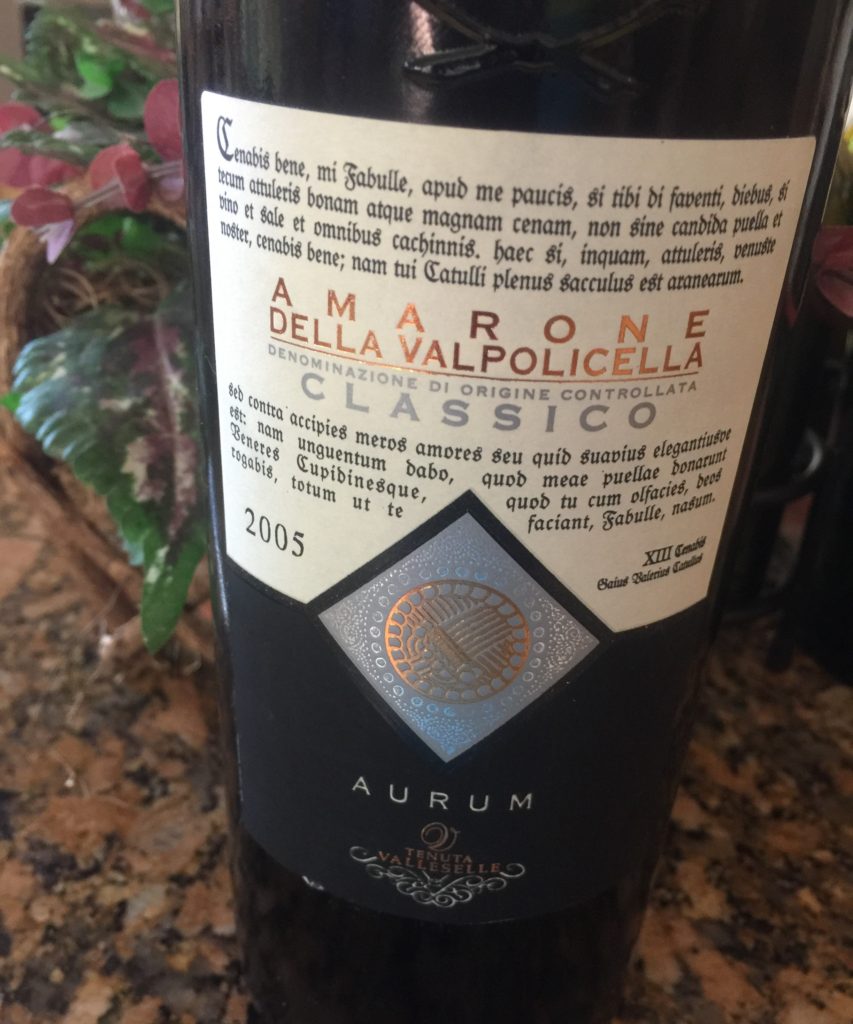
DOLCE
Torta di Mandorle con Gocce di Cioccalato
(Almond Torte with Chocolate Chips)
Fior d’Arancio Blue cheese with Orange
Assorted Italian Chocolates and Cookies
No matter how full your guests say they are, there is always room for the dessert course! Even if just a bite or two. My foodie friend, Mariann Slickers, who is also a fabulous cook but doesn’t want to admit it, offered to make the almond torte and I happily obliged. The Torta di Mandorle or almond cake is a classic dessert for the Veneto and the chocolate chips were a bonus. That delicious cake with the flavor of almonds and a bite of Fior d’Arancio Blue cheese with Orange which is also made nearby was a marriage made in heaven. Maculan Torcolato is one of the most famous dessert wines of the Veneto. It is made from Vespaiolo grapes that have seen a bit of botrytis, then picked and dried in special drying lofts for four months in the appassimento method, then aged in French oak barriques for a year. It was full of aromas of honey, flowers, vanilla, salted caramels and wood spices and guaranteed to pair with almond cakes and aged cheeses like Asiago and blue. My oh my, what a perfect ending to our dinner!
DIGESTIVO
Maculan Torcolato 2012, Breganze DOC, Vicenza, Veneto
In just over five hours a group of winelover foodies worked our way through a magical evening of 10 courses paired with 10 wines all of which highlighted a particular area and/or wine of the Veneto and Friuli regions of Italy, all part of the area known as Tre Venezie. I did the work which included all my research and writing of two other forkandcorkdivine posts, then waited several months for this to become reality and it finally happened. Once again I fell in love with my wine region. Yes, this area now makes some excellent wines and I personally think that you can find white wine heaven right here on earth in the Veneto and Friuli, but especially do not pass by any white wines of Friuli – Collio and Colli Orientali DOCs in particular. I now drink them every chance I can get.
In case you are wondering where I purchased these particular wines, six of them were initially tasted at wine dinner events served by Marcello Palazzi, our Winebow representative, and then purchased through The Wine Store in Naples. Other sources include Natural Wine Naples wine store and wine.com on the internet.
Many thanks to everyone who assisted with the research, the dinner and drinking the wines! I couldn’t make it happen without you. And where to next? That’s an easy question. We have unfinished business to complete. Part 2 of our Tre Venezie wining and dining armchair adventure includes a trip to Trentino-Alto Adige which we all plan to make in just a few weeks. Stay tuned for the pictures! Buon appetito and ciao for now.
lfrakos@gmail.com
5.14.19

